Kalanchoe plants are beloved for their vibrant flowers and easy-care nature, making them perfect for indoor gardening. Whether you’re looking for striking blooms or unique foliage, there’s a kalanchoe variety for every plant lover. Here are 50 stunning types to consider for your home.
Contents
- 1 Flowering Kalanchoe Varieties
- 1.1 Kalanchoe blossfeldiana
- 1.2 Kalanchoe ‘Calandiva’
- 1.3 Kalanchoe manginii
- 1.4 Kalanchoe uniflora
- 1.5 Kalanchoe ‘Tessa’
- 1.6 Kalanchoe pumila
- 1.7 Kalanchoe delagoensis
- 1.8 Kalanchoe scapigera
- 1.9 Kalanchoe ‘Wendy’
- 1.10 Kalanchoe daigremontiana
- 1.11 Kalanchoe houghtonii
- 1.12 Kalanchoe pinnata
- 1.13 Kalanchoe garambiensis
- 1.14 Kalanchoe farinacea
- 1.15 Kalanchoe laciniata
- 1.16 Kalanchoe crenata
- 1.17 Kalanchoe porphyrocalyx
- 1.18 Kalanchoe robusta
- 1.19 Kalanchoe mortagei
- 2 Foliage Kalanchoe Varieties
- 2.1 Kalanchoe tomentosa
- 2.2 Kalanchoe beharensis
- 2.3 Kalanchoe luciae
- 2.4 Kalanchoe marmorata
- 2.5 Kalanchoe rotundifolia
- 2.6 Kalanchoe humilis
- 2.7 Kalanchoe laxiflora
- 2.8 Kalanchoe laetivirens
- 2.9 Kalanchoe beauverdii
- 2.10 Kalanchoe sexangularis
- 2.11 Kalanchoe suarezensis
- 2.12 Kalanchoe ‘Tarntula’
- 2.13 Kalanchoe arborescens
- 2.14 Kalanchoe millotii
- 2.15 Kalanchoe nyikae
- 2.16 Kalanchoe synsepala
- 2.17 Kalanchoe longiflora
- 2.18 Kalanchoe bracteata
- 2.19 Kalanchoe ceratophylla
- 2.20 Kalanchoe schizophylla
- 2.21 Kalanchoe hildebrandtii
- 2.22 Kalanchoe gastonis-bonnieri
- 2.23 Kalanchoe oricula
- 2.24 Kalanchoe fedtschenkoi
- 2.25 Kalanchoe eriophylla
- 2.26 Kalanchoe thyrsiflora
- 2.27 Kalanchoe orgyalis
- 2.28 Kalanchoe rhombopilosa
- 3 Conclusion
Flowering Kalanchoe Varieties
Kalanchoe blossfeldiana
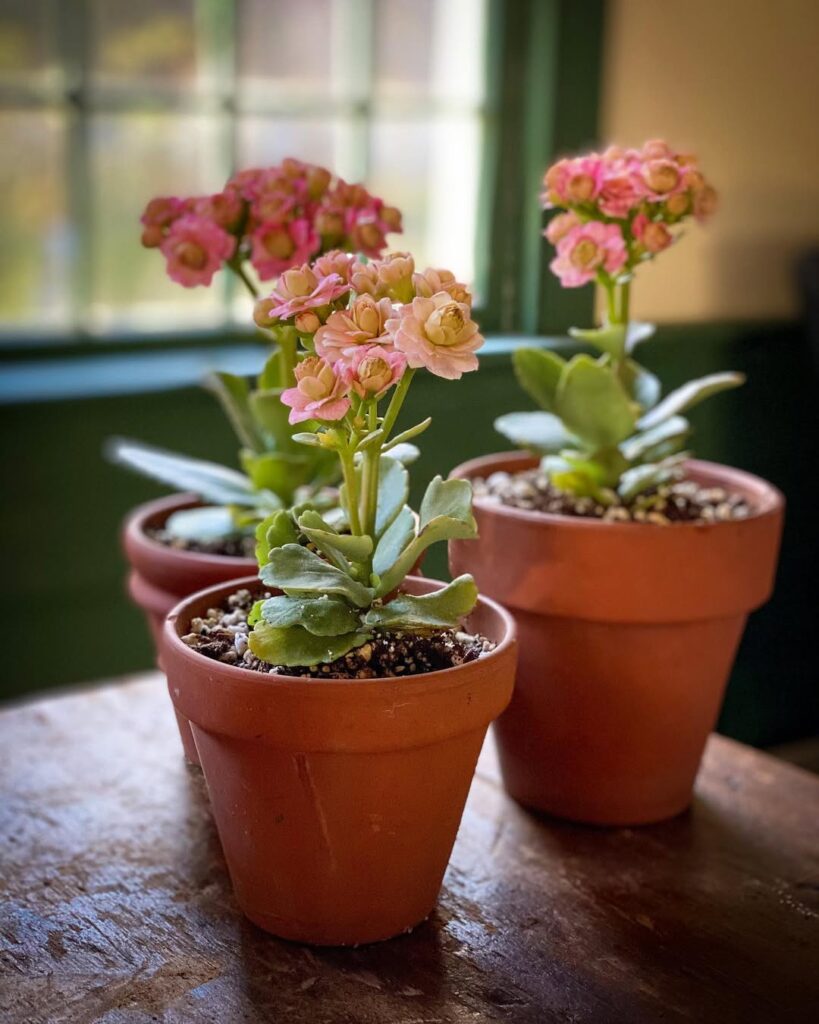
One of the most popular kalanchoe varieties, Kalanchoe blossfeldiana features clusters of bright flowers in red, pink, yellow, and orange. It thrives in bright, indirect light and requires minimal watering.
Kalanchoe ‘Calandiva’
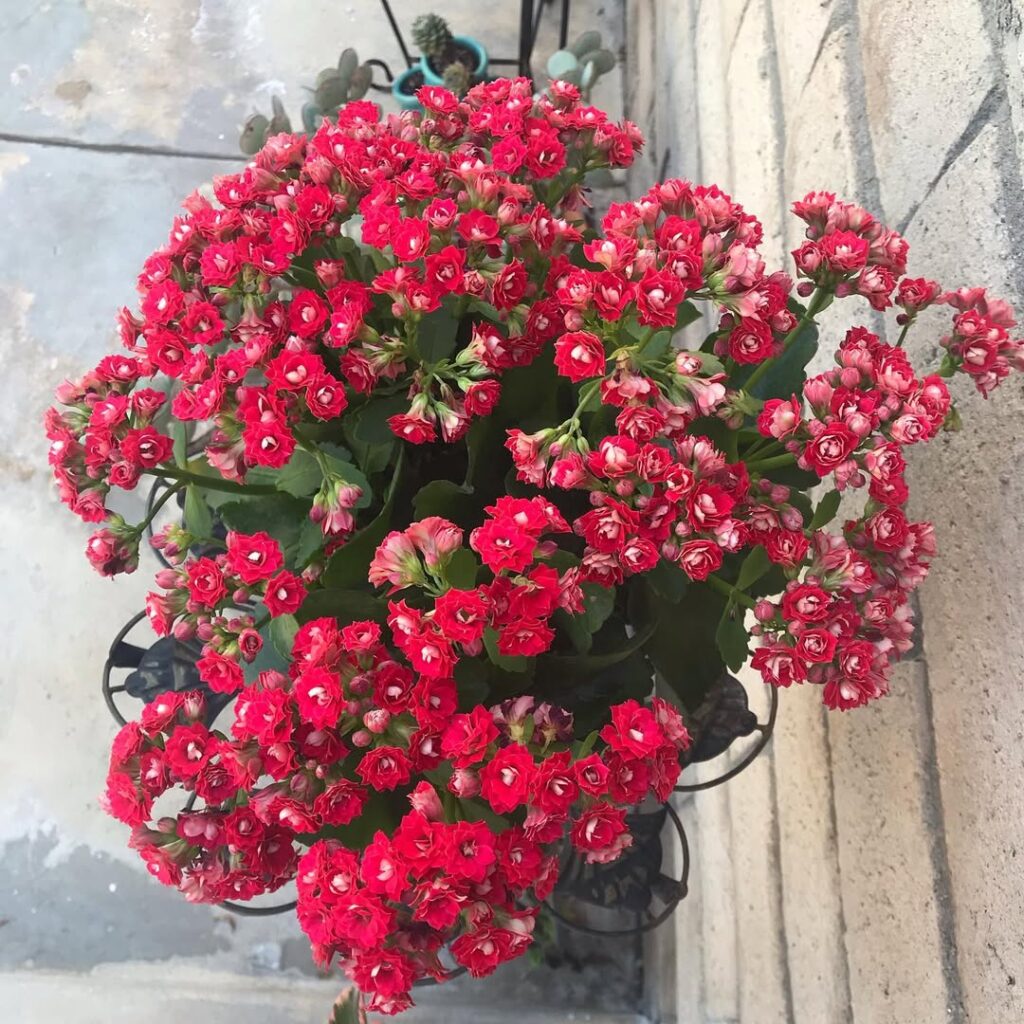
A stunning cultivar of Kalanchoe blossfeldiana, ‘Calandiva’ boasts double-layered, rose-like flowers in various colors. It blooms for weeks, adding a cheerful touch to any indoor space.
Kalanchoe manginii
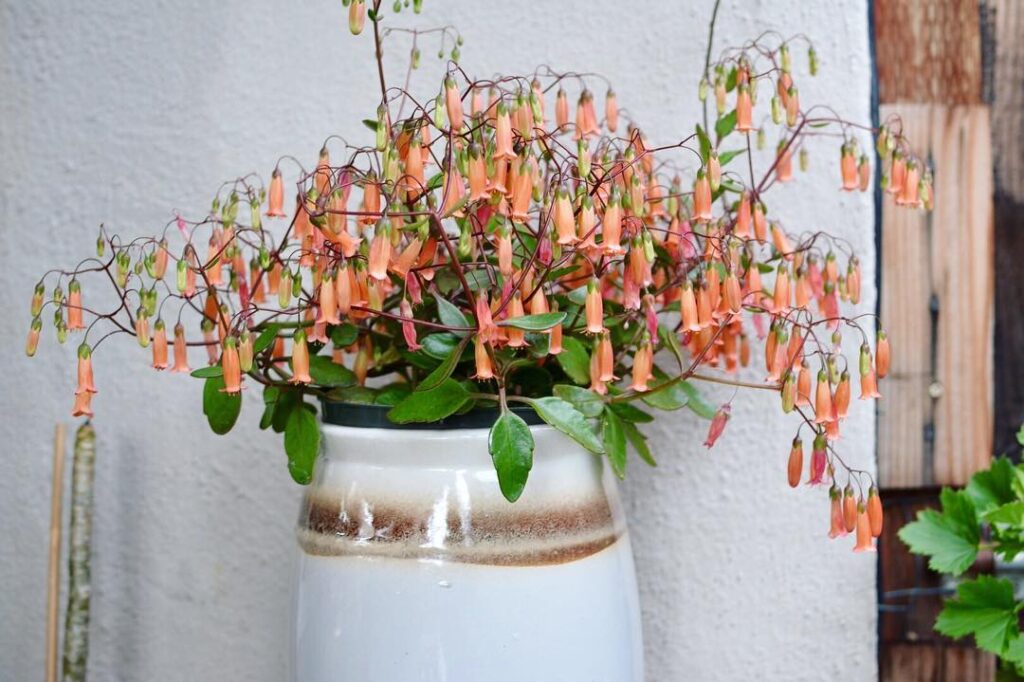
Known as Beach Bells, this variety produces red-orange, urn-shaped flowers that dangle gracefully. Its compact growth makes it ideal for hanging baskets.
Kalanchoe uniflora
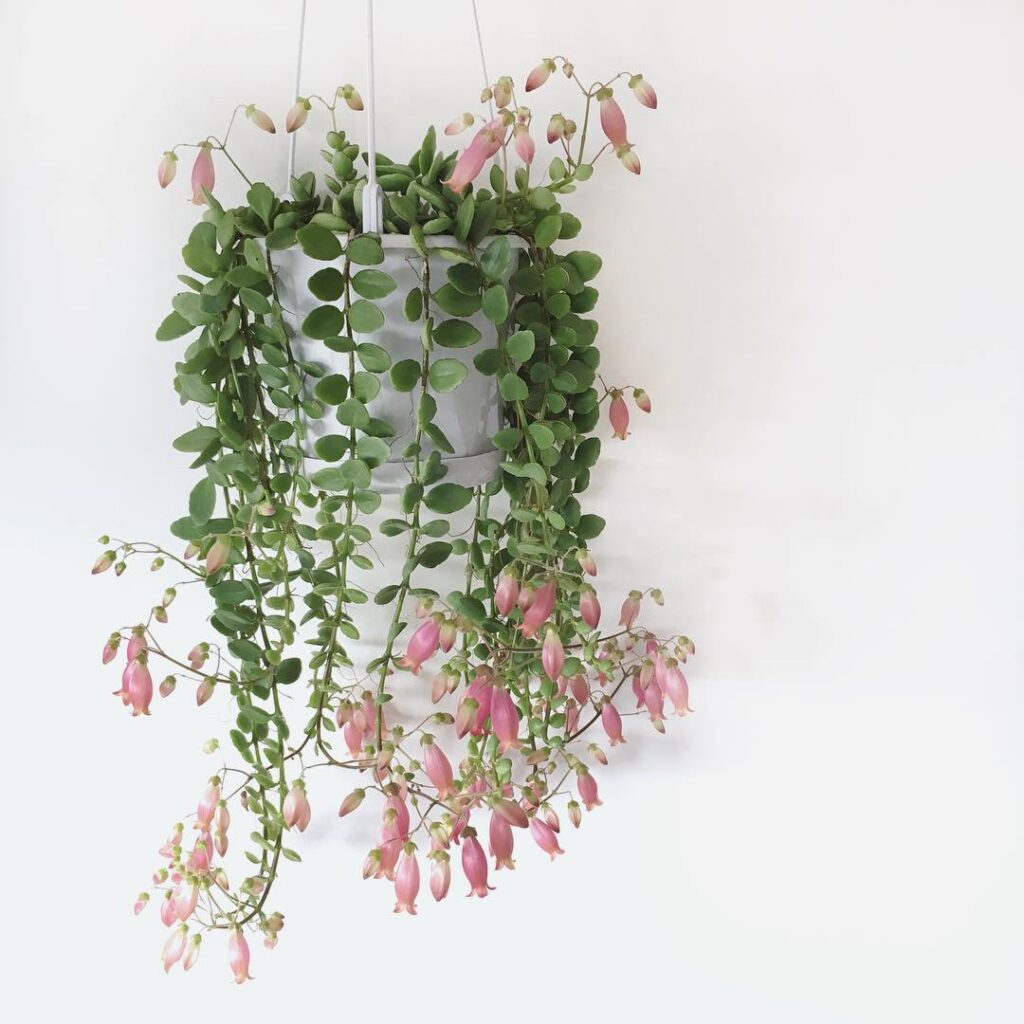
Also called Coral Bells, this epiphytic succulent has climbing stems and bright red bell-shaped flowers. It thrives in well-draining soil and indirect sunlight.
Kalanchoe ‘Tessa’
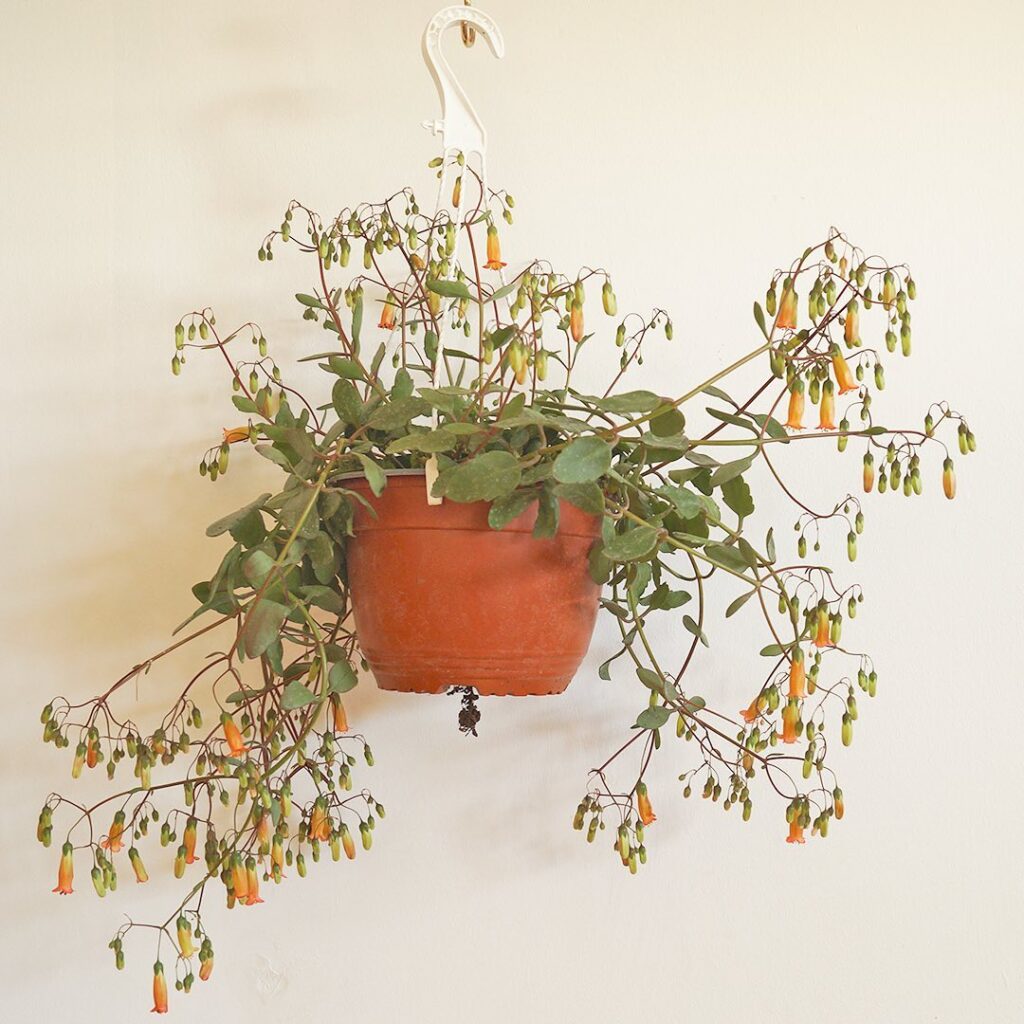
This charming perennial succulent forms fleshy oval-shaped leaves with red edges and orange-red tubular flowers. It blooms in late winter to spring, brightening up indoor spaces.
Kalanchoe pumila
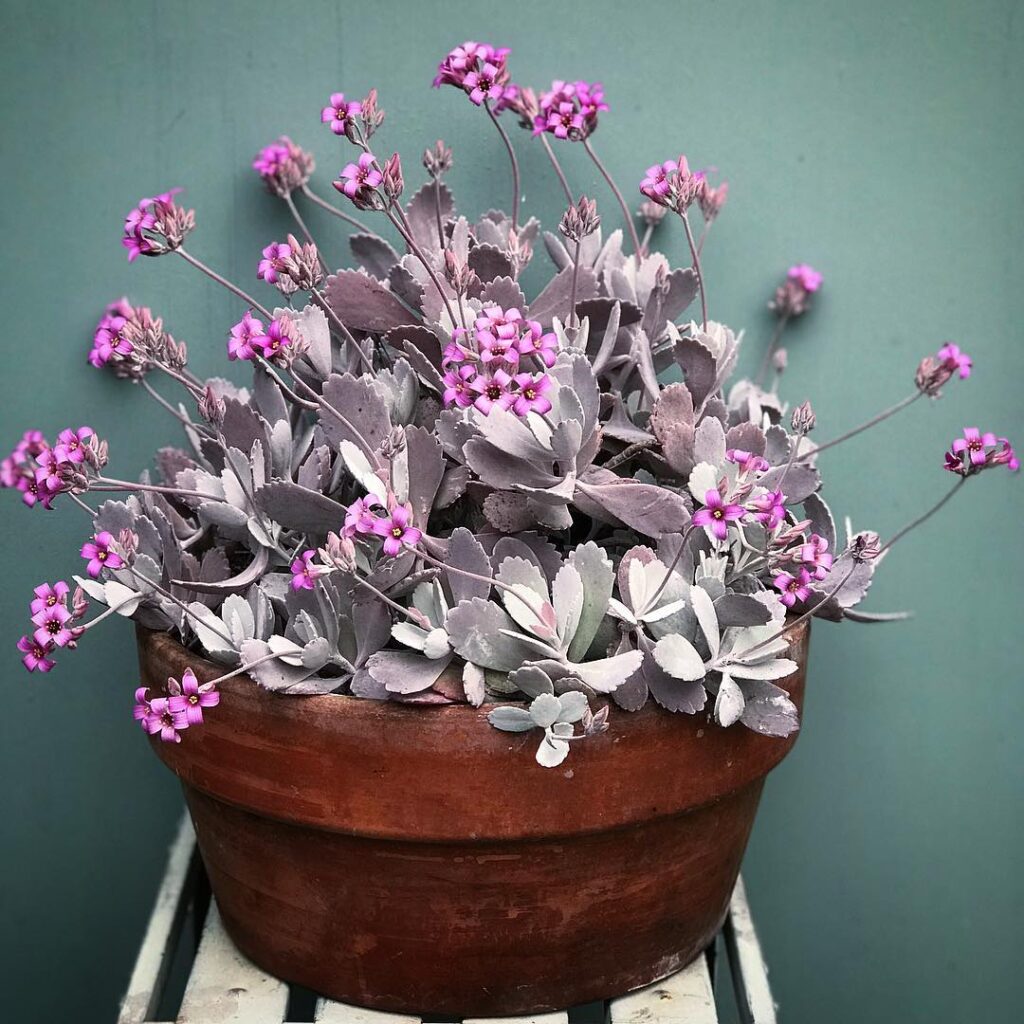
Also known as Flower Dust Plant, this dwarf succulent has silvery-gray leaves covered in fine hairs. It produces clusters of violet-pink flowers with yellow centers, adding a delicate charm to indoor spaces.
Kalanchoe delagoensis
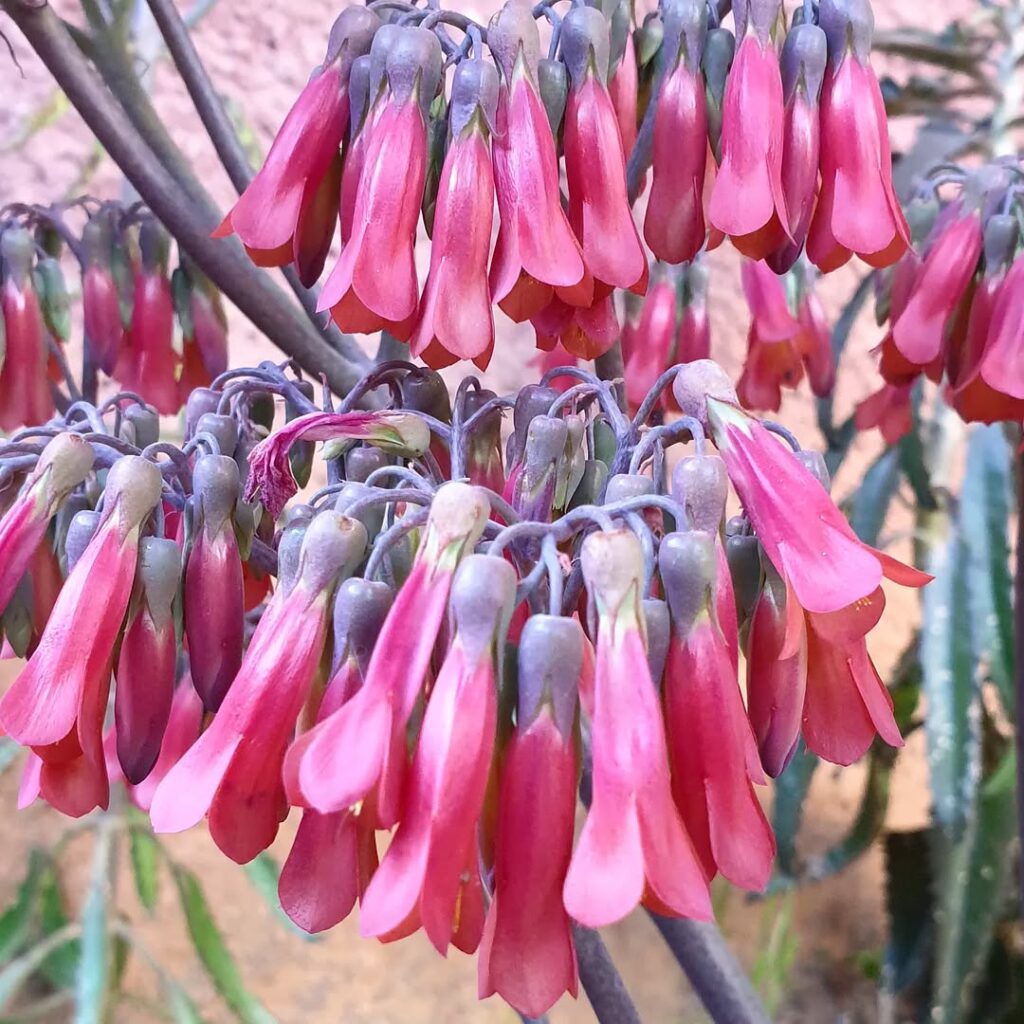
Commonly called Chandelier Plant, this variety has slender, tubular leaves with dark markings. It produces small, urn-shaped red flowers and propagates easily through tiny plantlets along its leaf edges.
Kalanchoe scapigera
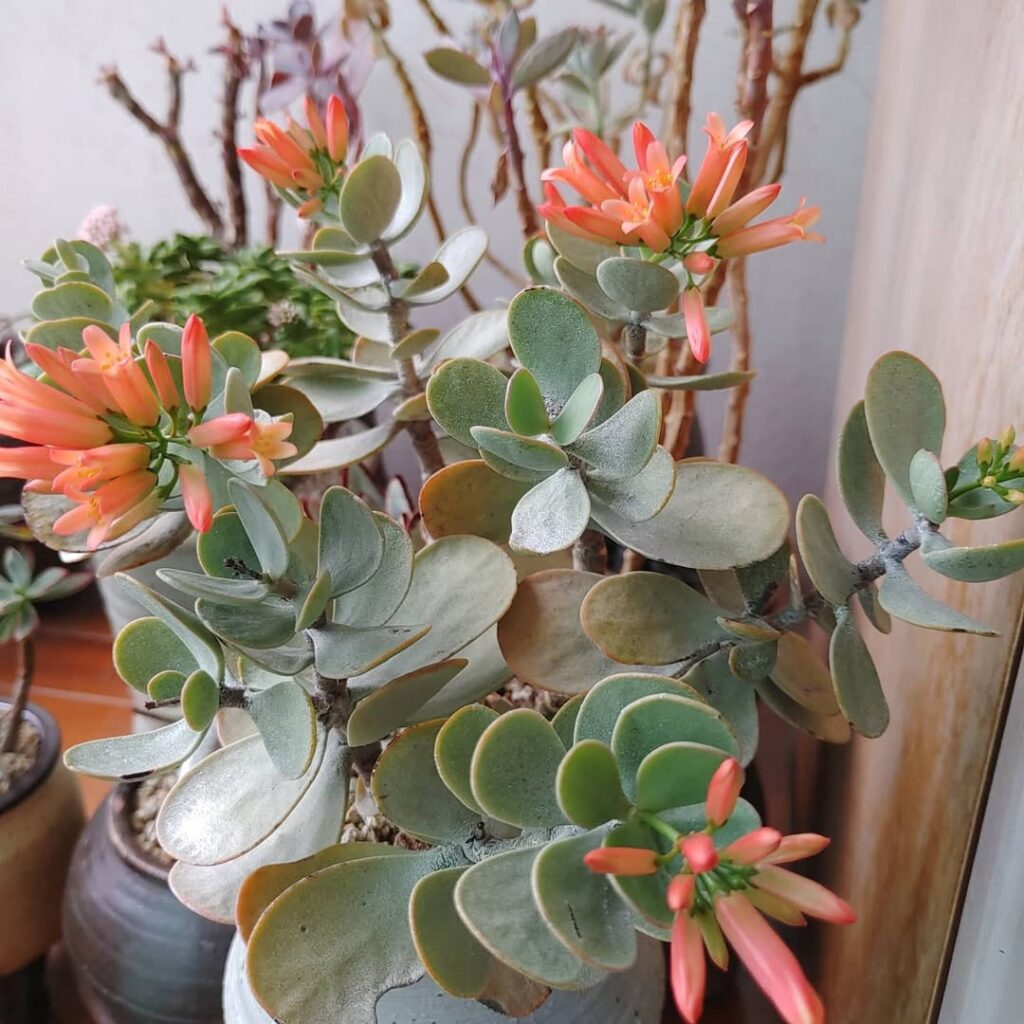
This rare species features thick, round green leaves and salmon-red tubular flowers. It thrives in bright light and well-draining soil, making it a unique addition to succulent collections.
Kalanchoe ‘Wendy’
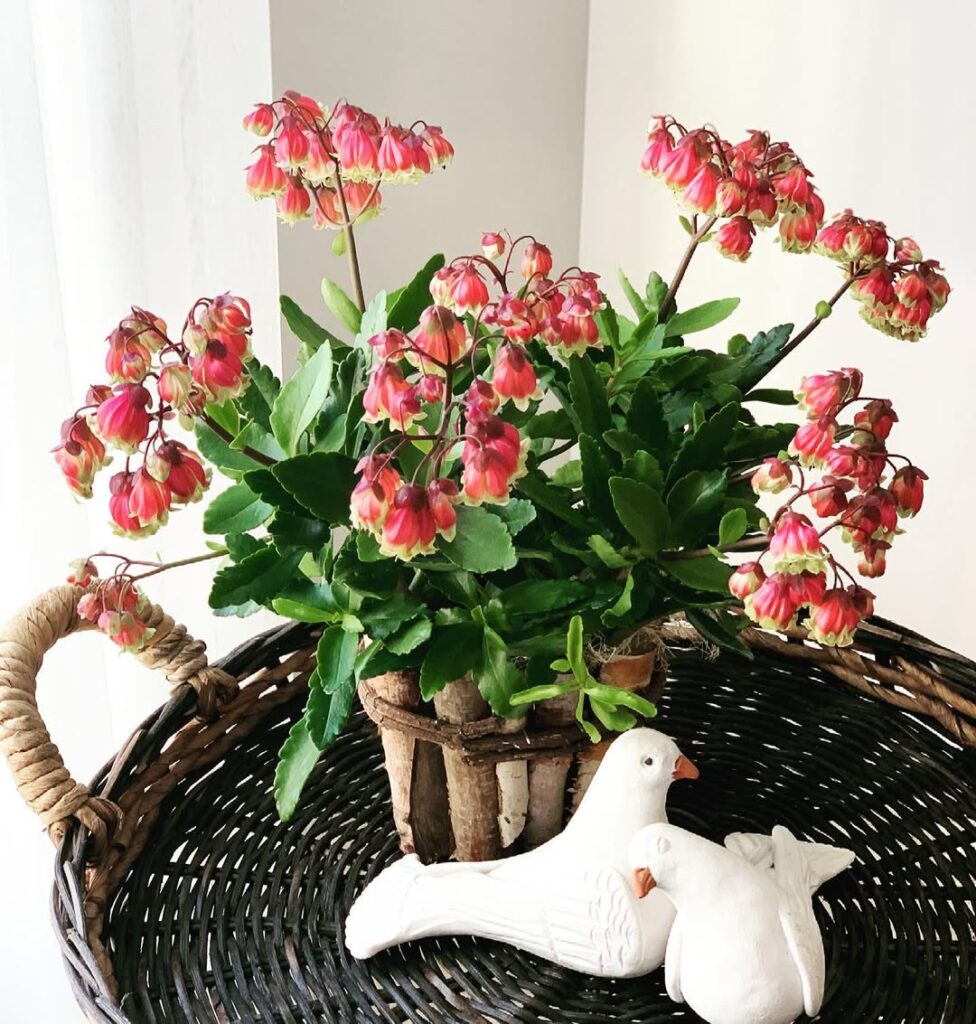
A semi-erect perennial with ovate succulent leaves, ‘Wendy’ showcases bell-shaped, purple-pink flowers tipped with pale yellow. Its uneven leaf edges add to its visual appeal.
Kalanchoe daigremontiana
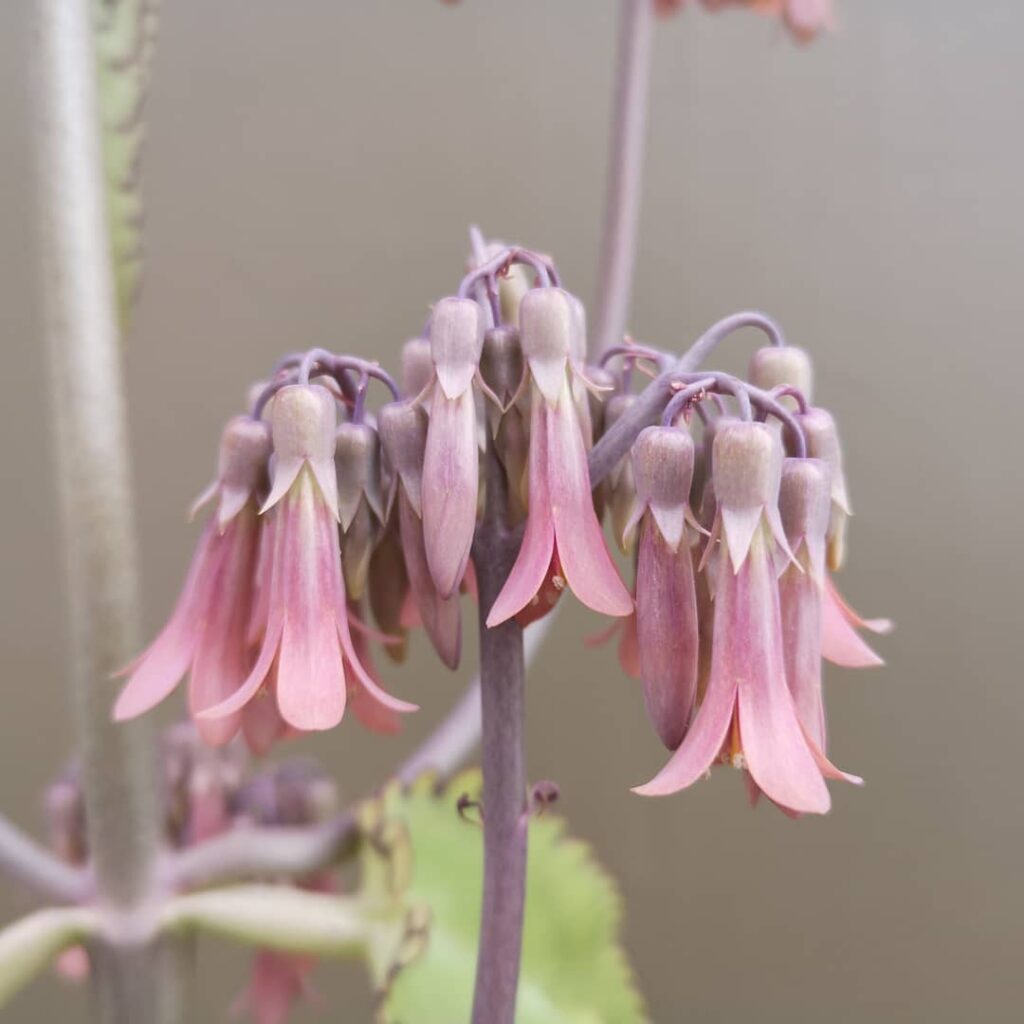
Kalanchoe daigremontiana, or “Mother of Thousands,” produces tall spikes of drooping tubular flowers in shades of violet, orange, and red once mature. While known for its unique ability to propagate from tiny plantlets along its leaves, its striking blooms add a dramatic touch to indoor gardens. With bright light and well-draining soil, it thrives as both a fascinating foliage and flowering specimen.
Kalanchoe houghtonii
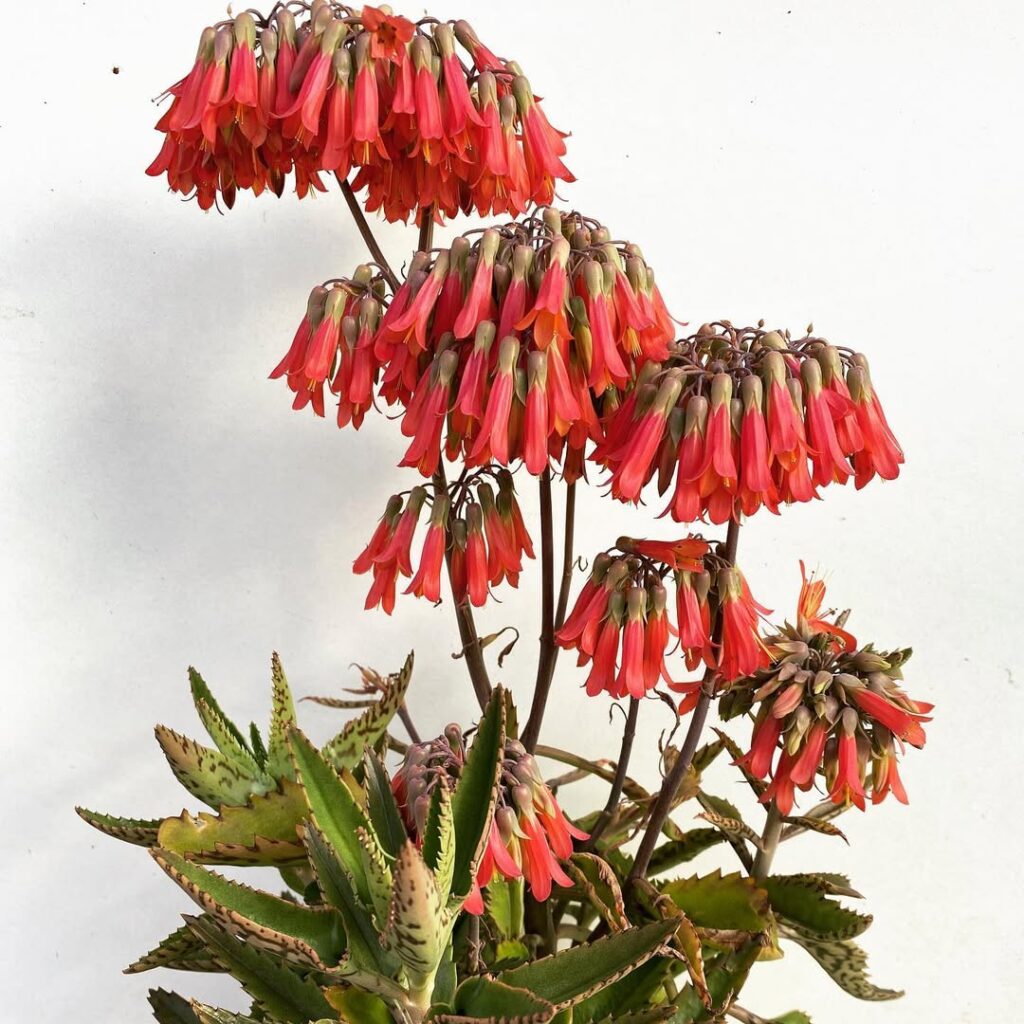
Kalanchoe houghtonii, or “Houghton’s Hybrid,” is a monocarpic succulent that produces dense clusters of pendulous, tubular flowers in shades of dark red, pinkish-orange, or pinkish-yellow. With its tall flowering spikes and boat-shaped, serrated leaves, it thrives in bright light and well-draining soil, making it a striking addition to indoor gardens.
Kalanchoe pinnata
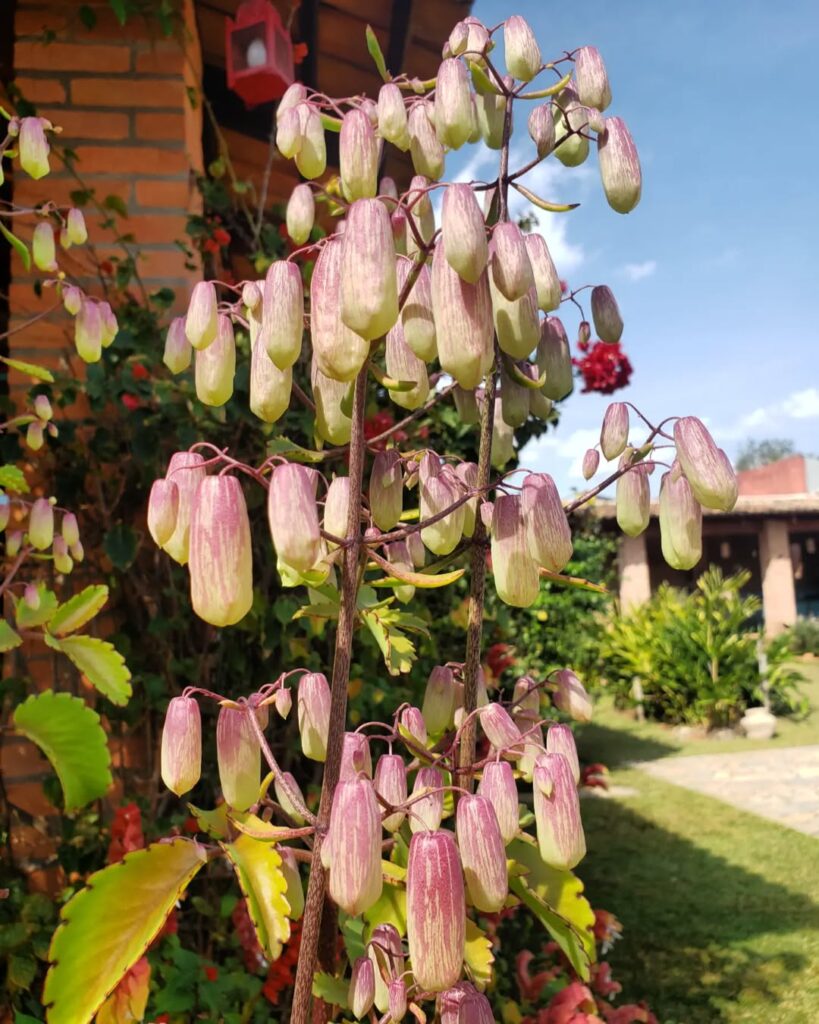
Known as Cathedral Bells, this variety has thick, green leaves with serrated edges. It produces bell-shaped flowers and is famous for its ability to propagate from leaf cuttings.
Kalanchoe garambiensis
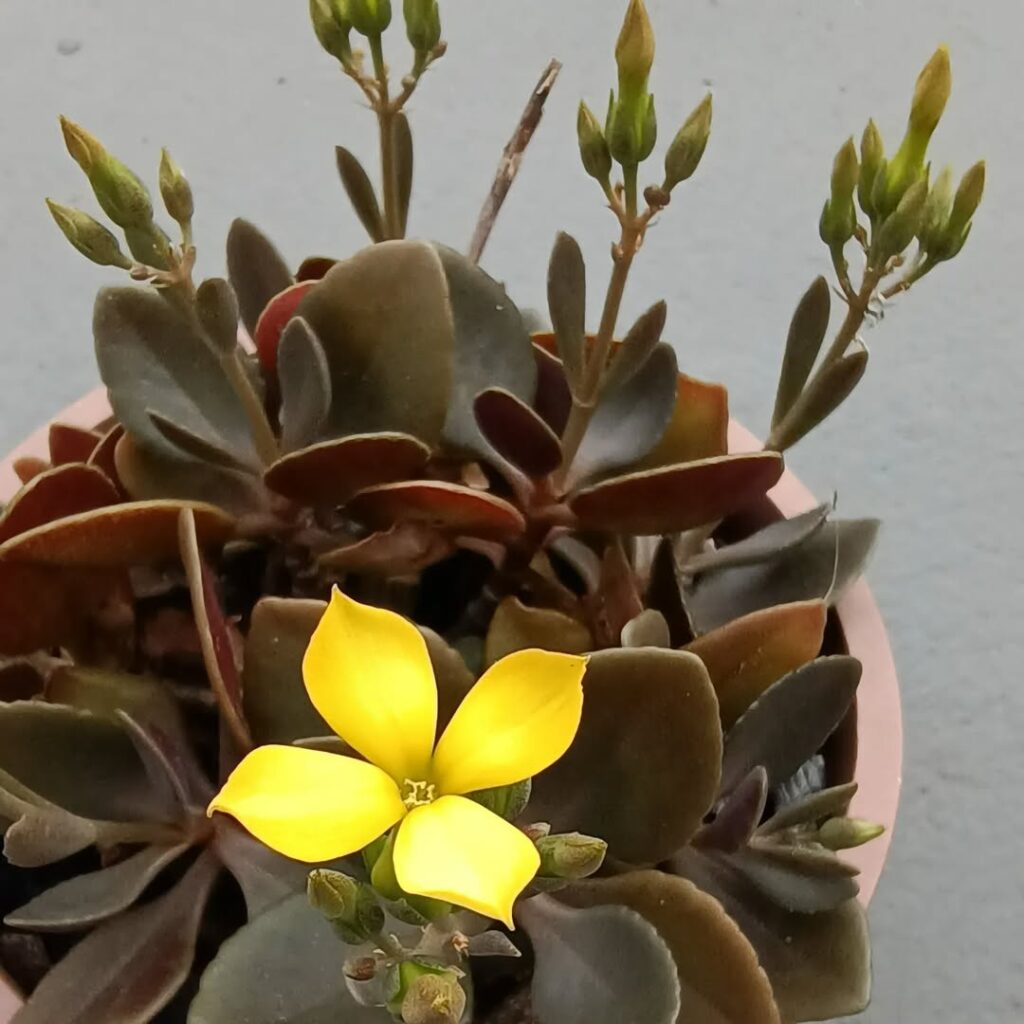
Kalanchoe garambiensis is a compact, perennial succulent native to Taiwan, typically found on limestone near coastal regions. Growing no more than 10 cm tall, it features spatulate leaves and produces small, corymbiform inflorescences with pale green flowers.
Kalanchoe farinacea
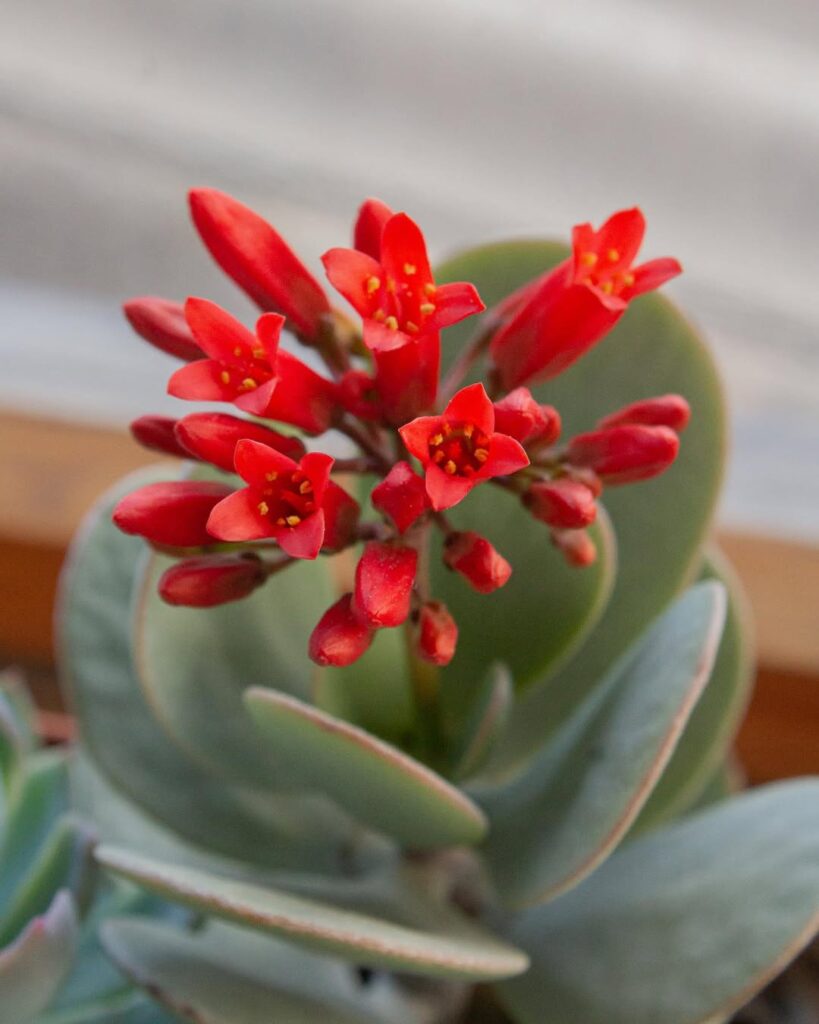
Kalanchoe farinacea is a succulent native to Socotra, featuring fleshy, green leaves with a powdery coating that helps reduce water loss. It thrives in arid conditions and produces bright red, tubular flowers with yellow anthers, adding a striking contrast to its foliage.
Kalanchoe laciniata

Kalanchoe laciniata is a succulent shrub with deeply lobed, bright green leaves that resemble antlers, often mistaken for Kalanchoe ceratophylla. Native to tropical East Africa and parts of Asia, it thrives in rocky environments and produces greenish-white to light orange flowers.
Kalanchoe crenata

Kalanchoe crenata is a resilient succulent that produces upright flower stalks with clusters of tubular blooms in shades of white, orange, pink, or yellow, typically appearing from late winter to early spring. Thriving in bright light and well-draining soil, it adds seasonal color while maintaining its characteristic fleshy, green leaves with reddish edges.
Kalanchoe porphyrocalyx
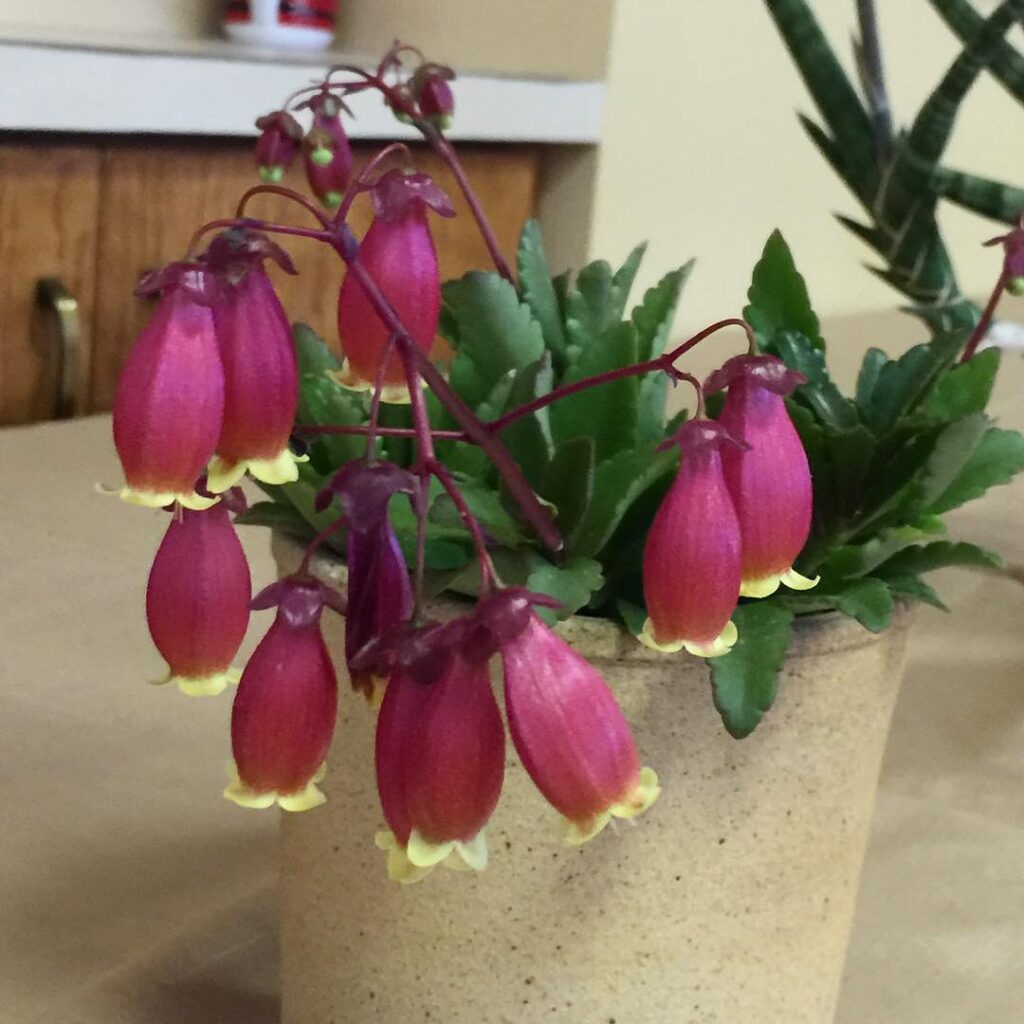
Kalanchoe porphyrocalyx is a trailing succulent native to Madagascar, featuring slender, rectangular green leaves with gentle serrations. It produces clusters of deep purple, bell-shaped flowers in winter, thriving in bright light and well-draining soil.
Kalanchoe robusta
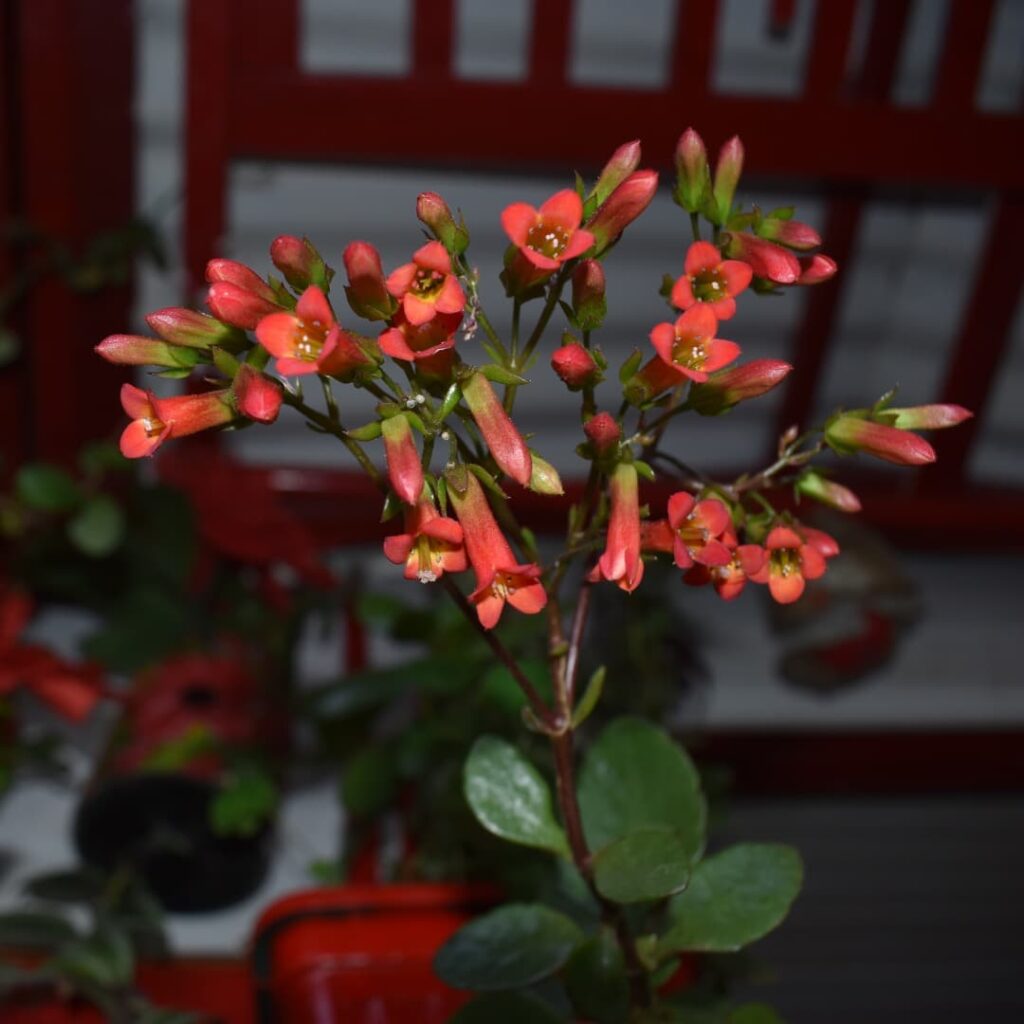
Kalanchoe robusta is a succulent subshrub endemic to Socotra, thriving in rocky slopes and limestone boulders at elevations of 300–750m. It features fleshy, drought-resistant leaves and produces small, bell-shaped flowers, making it well-adapted to arid environments.
Kalanchoe mortagei
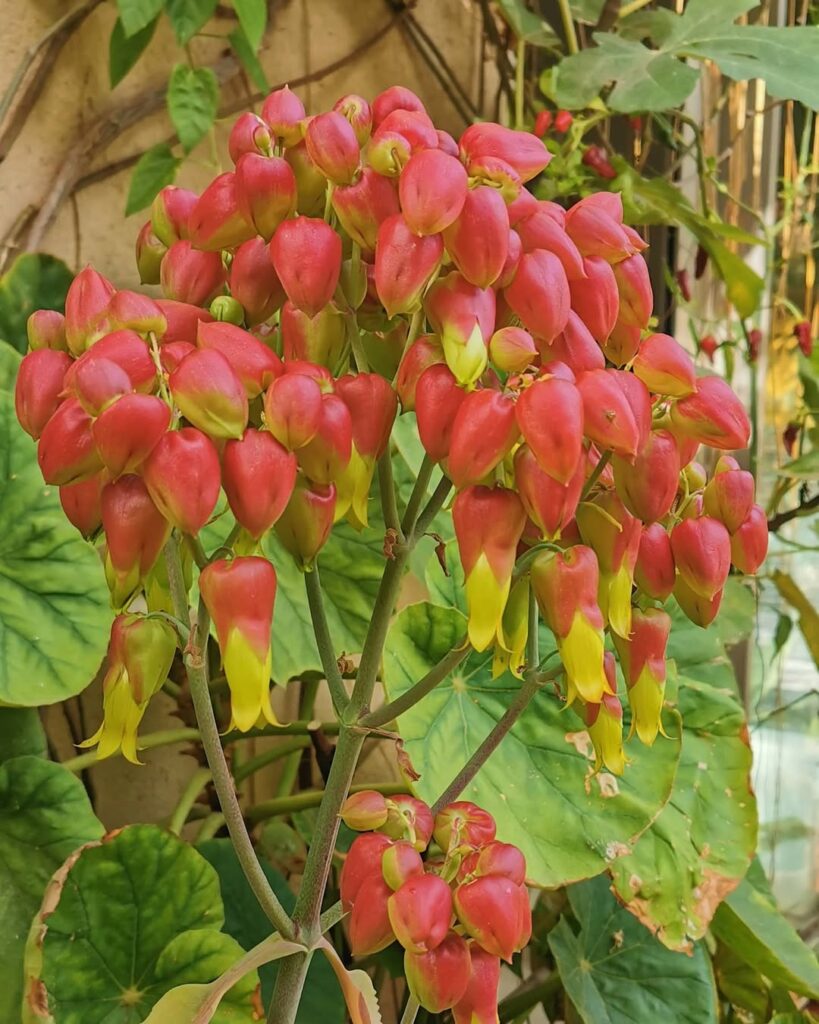
Kalanchoe mortagei is a succulent native to northern Madagascar, featuring auriculate to peltate leaves that distinguish it from similar species like Kalanchoe suarezensis. It thrives in rocky, dry habitats and produces small, bell-shaped yellow flowers, making it a resilient ornamental plant.
Foliage Kalanchoe Varieties
Kalanchoe tomentosa
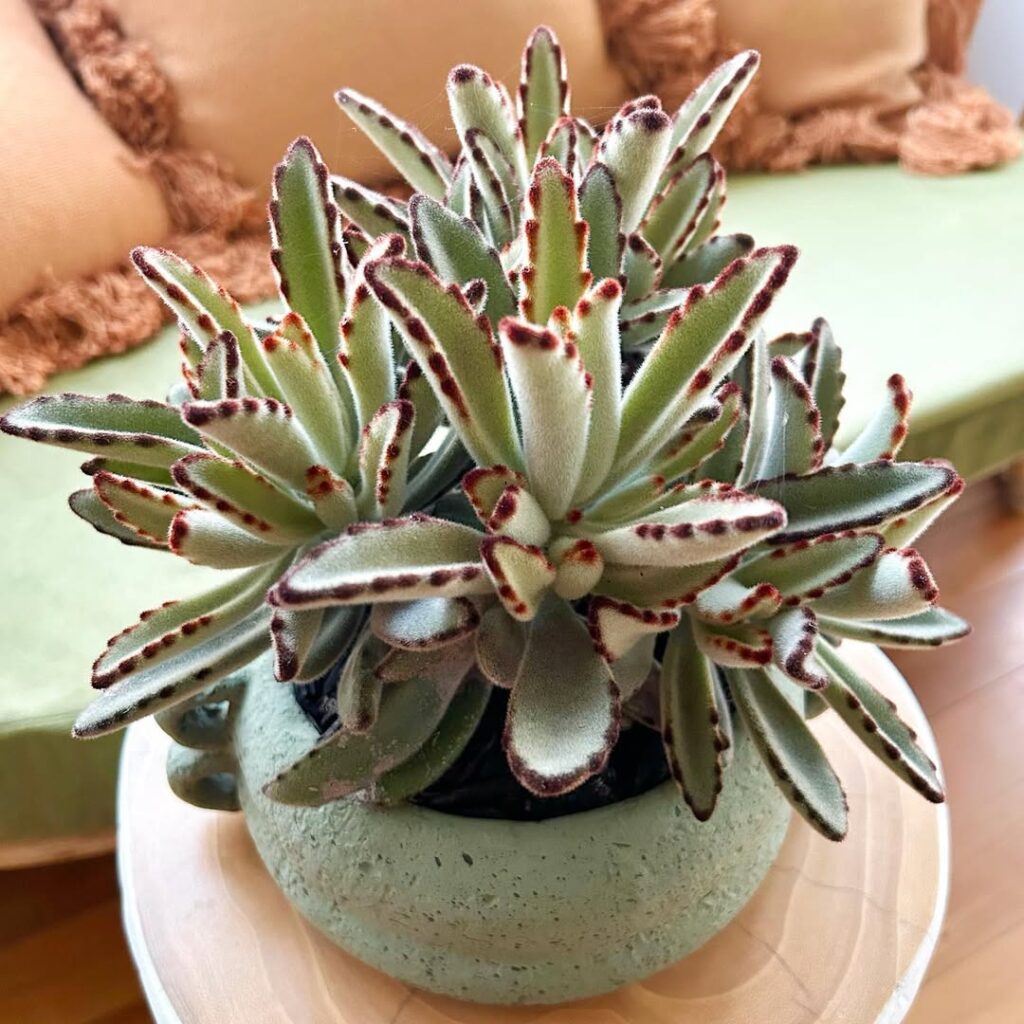
Commonly known as Panda Plant, this variety has fuzzy, silver-green leaves with brown edges. It’s a low-maintenance succulent that adds texture to indoor gardens.
Kalanchoe beharensis
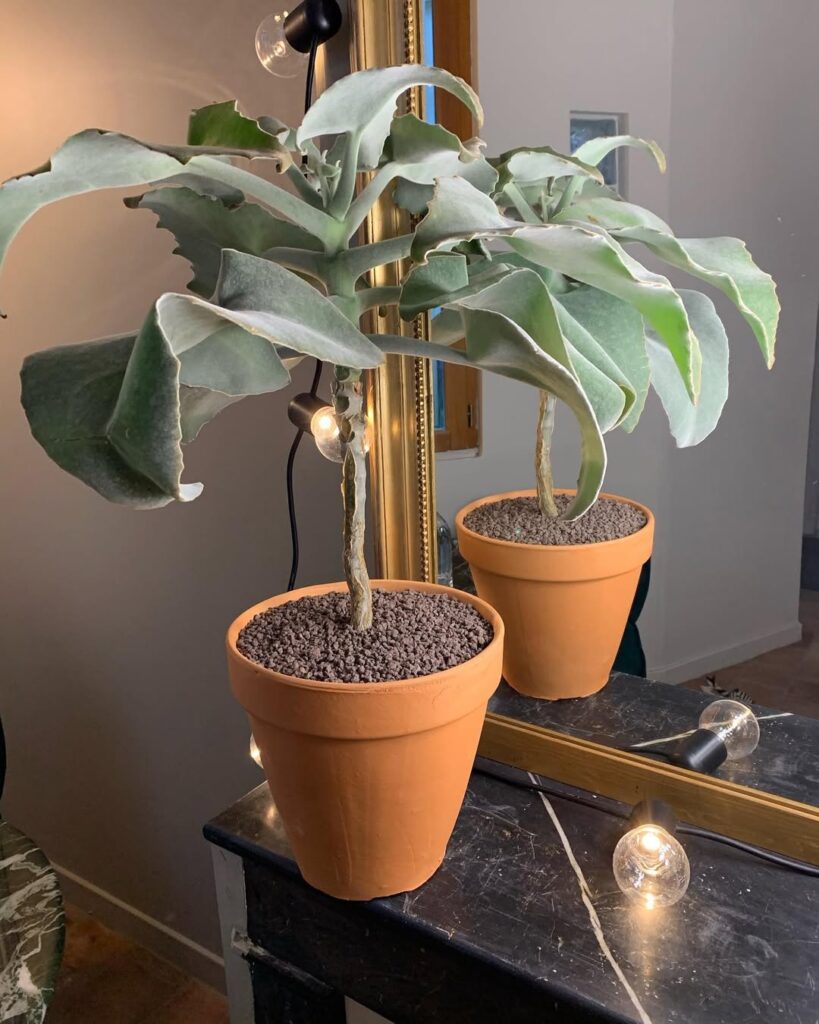
This striking variety, called Velvet Elephant Ear, has large, felted leaves with a unique texture. It grows slowly but makes a bold statement in any collection.
Kalanchoe luciae
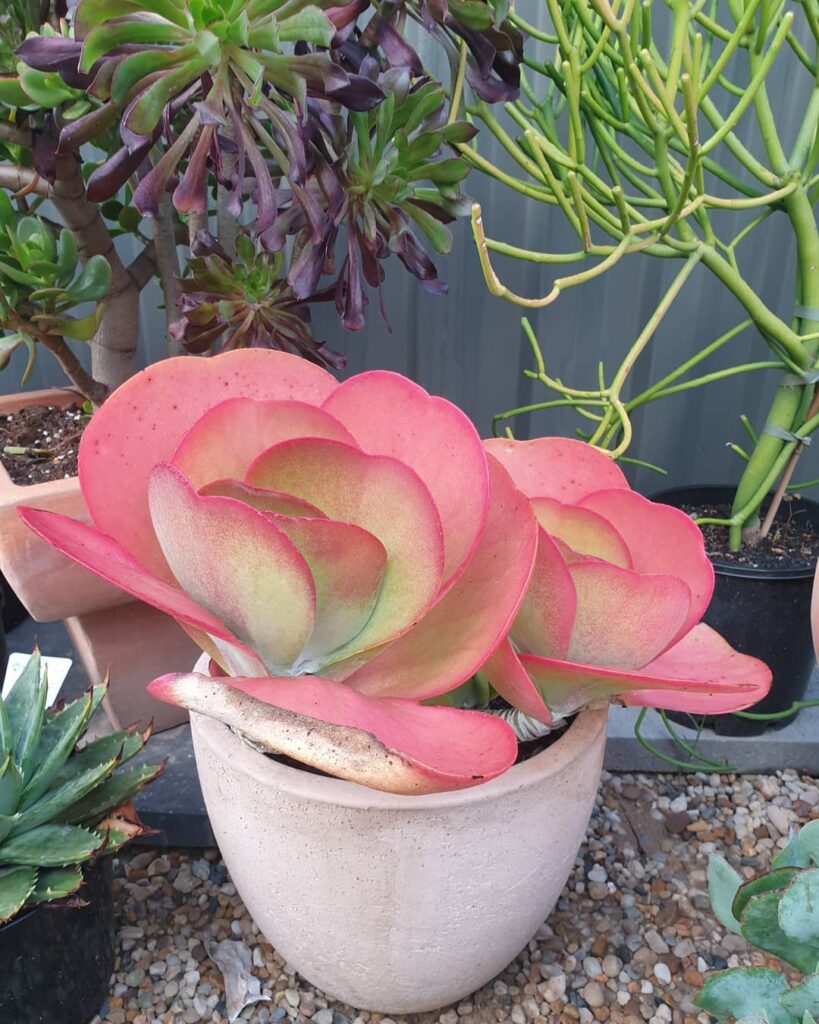
Also known as Paddle Plant, this variety has thick, round leaves that turn red in bright light. It’s a dramatic addition to succulent arrangements.
Kalanchoe marmorata
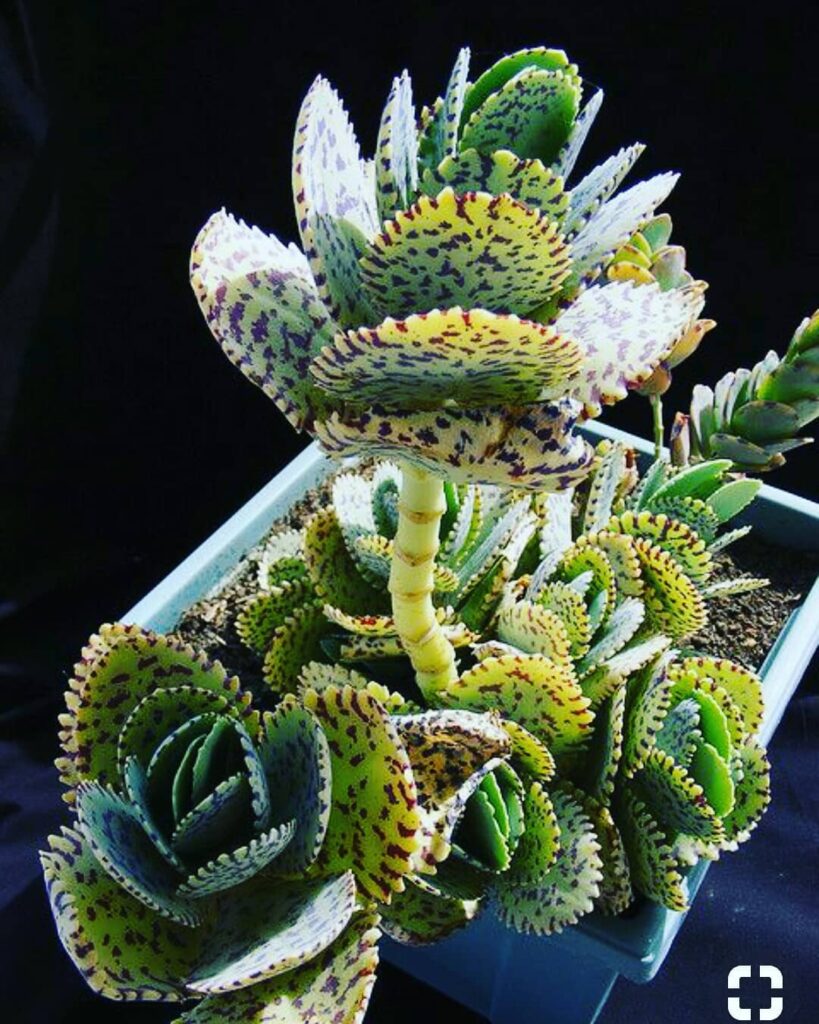
Known as Pen Wiper Plant, this variety has scalloped leaves with brown blotches. It’s a visually interesting succulent that thrives in bright light.
Kalanchoe rotundifolia
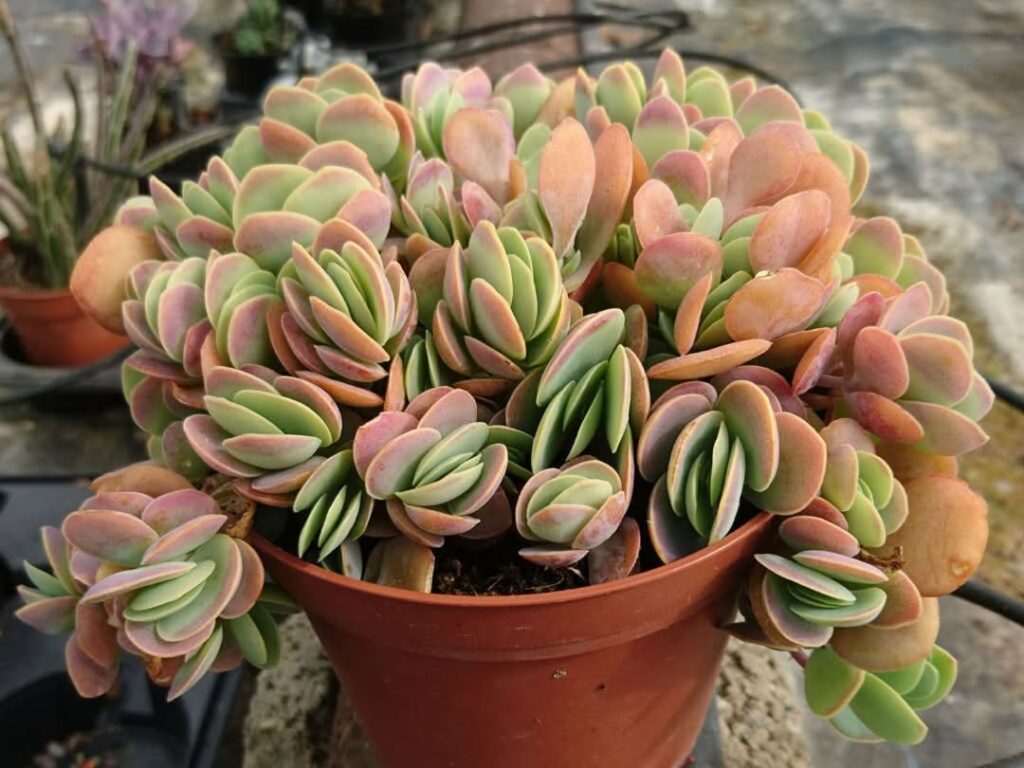
This variety has fleshy, rounded leaves with an orange underside. It grows up to four feet tall and produces yellow or orange flowers that turn red as they mature.
Kalanchoe humilis

Kalanchoe humilis is a striking succulent with pale green leaves adorned with bold purple or maroon markings, often forming horizontal stripes. Native to Tanzania, Malawi, and Mozambique, it thrives in bright light and well-draining soil, occasionally producing small purple to green flowers in mid-summer.
Kalanchoe laxiflora
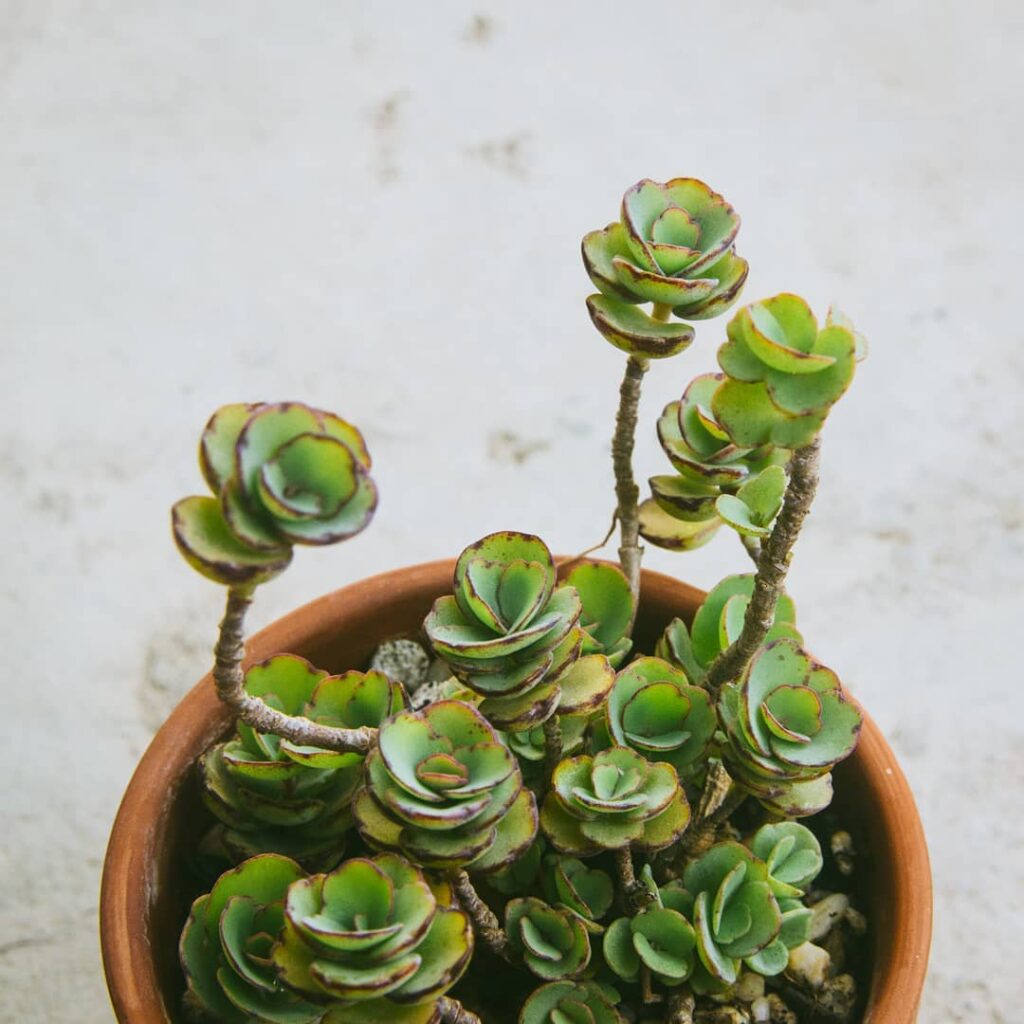
Kalanchoe laxiflora, or “Milky Widow’s Thrill,” is a shrubby succulent with bluish-green leaves edged in red, sometimes displaying brown or red spots. Native to Madagascar, it produces pendulous, tubular flowers in shades of yellow-green, orange-red, or violet, thriving in bright light and well-draining soil.
Kalanchoe laetivirens
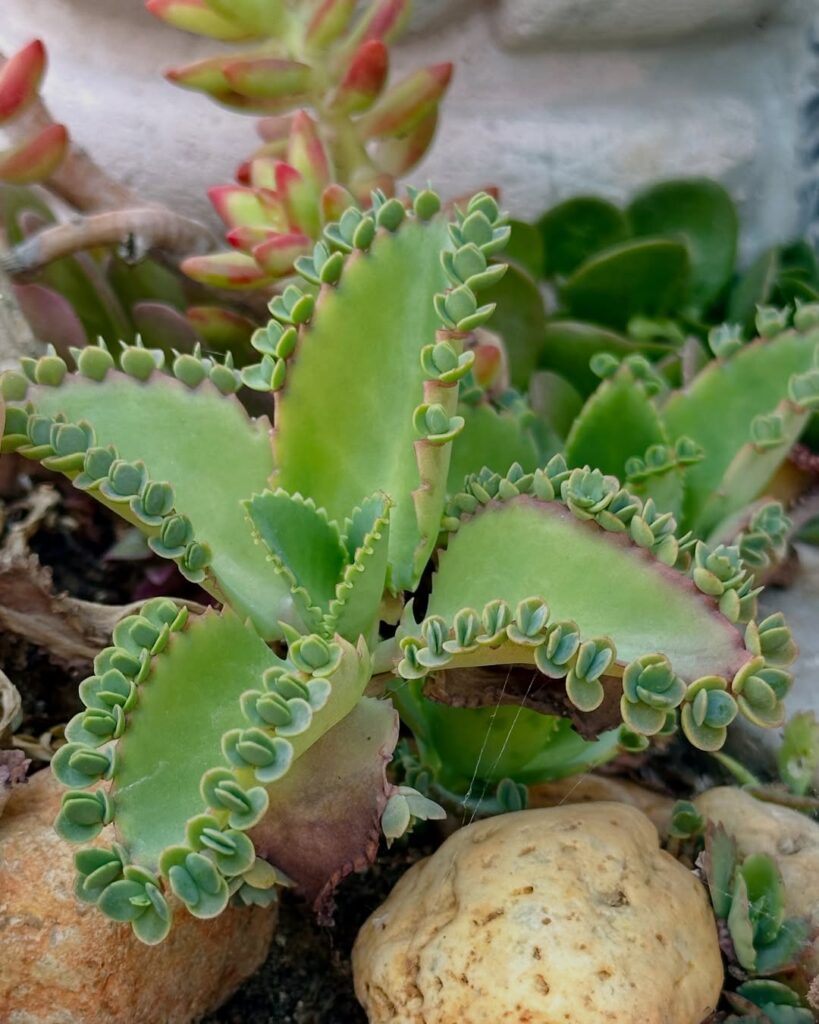
Kalanchoe laetivirens, or “Mother of Thousands,” is a fast-growing succulent with large, bluish-green leaves that produce tiny plantlets along their edges. It thrives in bright light and well-draining soil, eventually developing tall flower stalks with greenish-white to pinkish-purple bell-shaped blooms in early spring.
Kalanchoe beauverdii
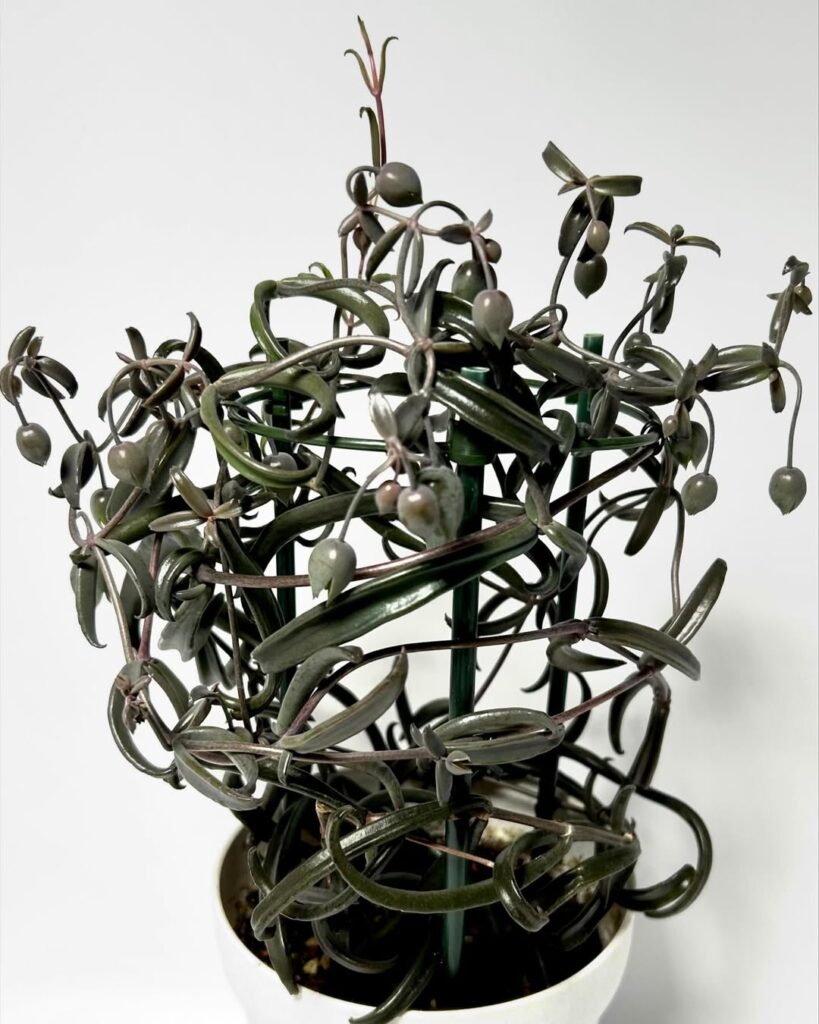
Kalanchoe beauverdii, or “Beauverd’s Widow’s Thrill,” is a climbing succulent native to Madagascar, known for its slender, wiry stems and elongated, dark green to purplish leaves. It produces drooping, bell-shaped flowers in pale green to gray-green with red-purple streaks, thriving in bright light and well-draining soil.
Kalanchoe sexangularis
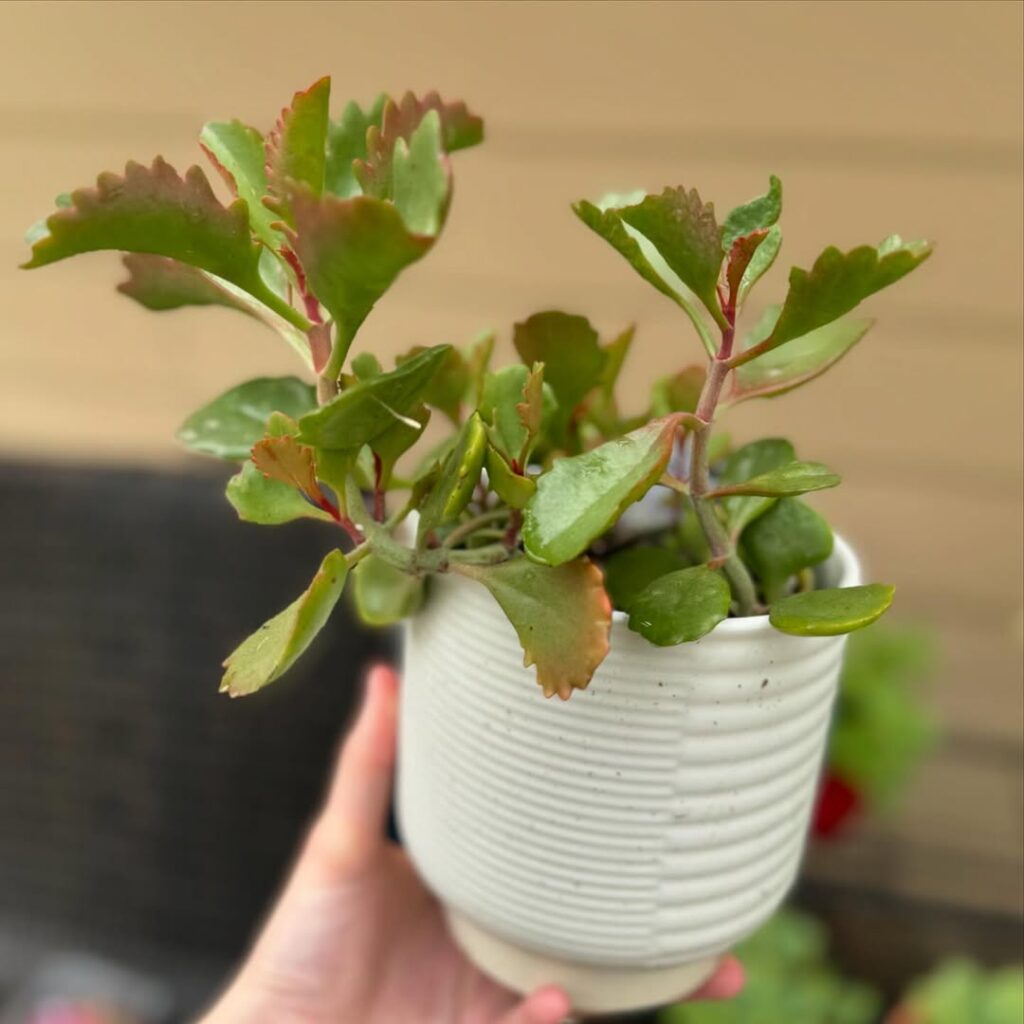
Kalanchoe sexangularis, or “Bushveld Kalanchoe,” is a succulent shrub native to Southern Africa, featuring upright, reddish stems and broadly elliptic to ovate leaves that turn deep ruby-red in full sun. In winter, it produces flat-topped inflorescences with bright yellow flowers, thriving in rocky slopes under partial shade.
Kalanchoe suarezensis
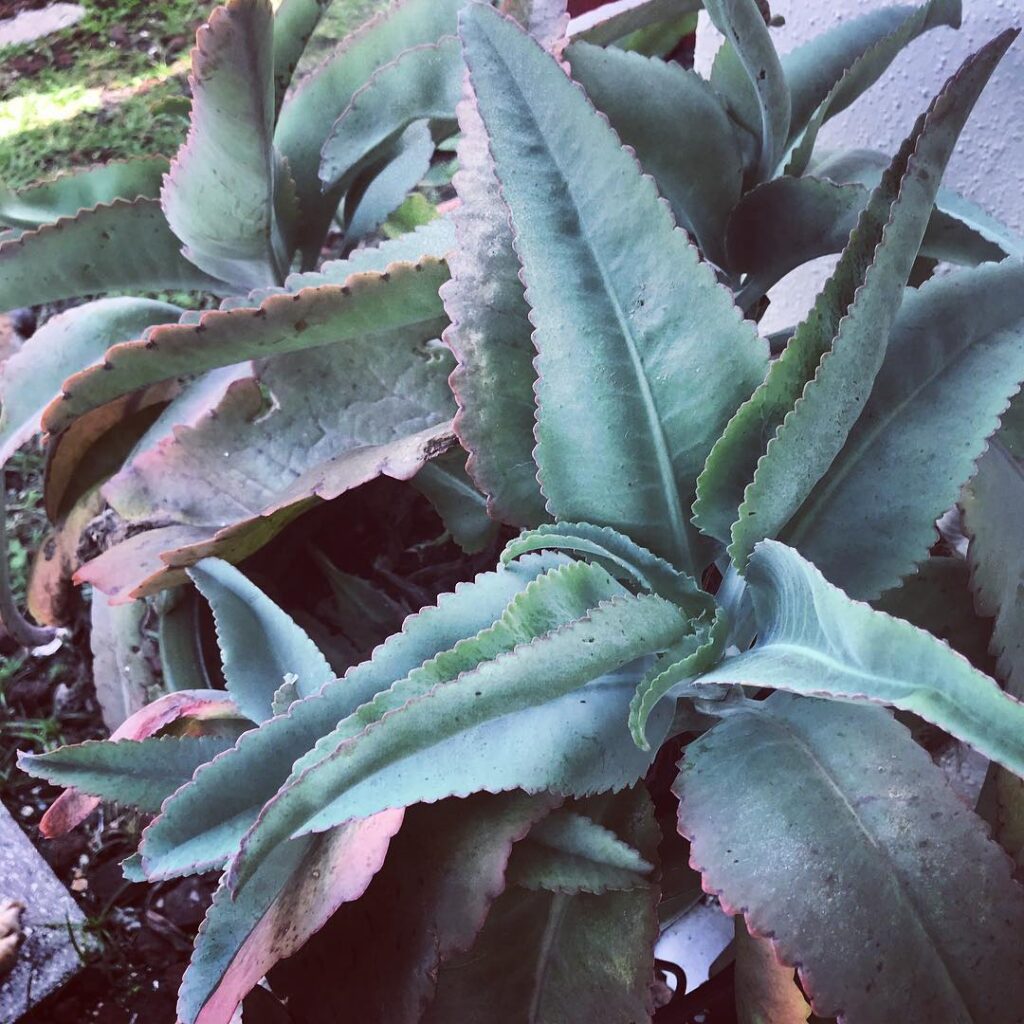
Kalanchoe suarezensis is a succulent subshrub native to northern Madagascar, often mistaken for Kalanchoe gastonis-bonnieri or Kalanchoe mortagei due to its similar leaf shape. It thrives in seasonally dry tropical conditions and produces small, bell-shaped flowers, typically found near the leaf tips.
Kalanchoe ‘Tarntula’
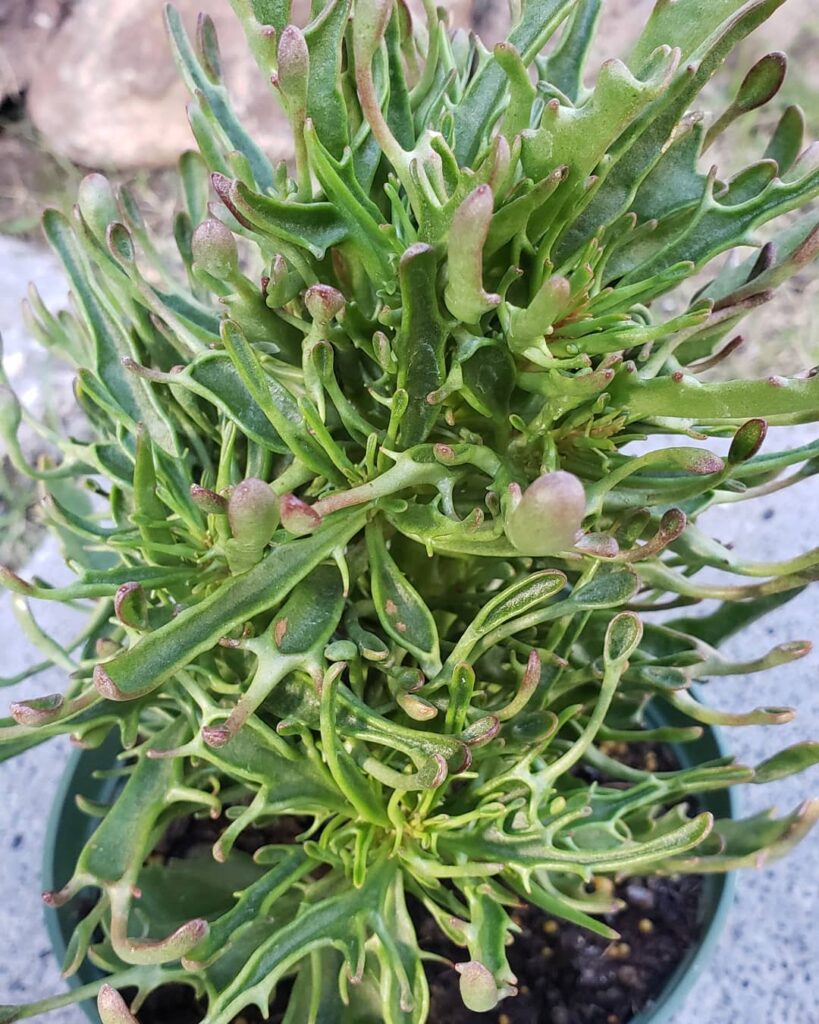
Kalanchoe ‘Tarantula’, also known as Kalanchoe katapifa ‘Tarantula’, is a bushy succulent with irregular, spidery green leaves and deeply serrated margins. It produces dense clusters of long-lasting, double pink to red flowers from spring through fall, thriving in bright light and well-draining soil.
Kalanchoe arborescens
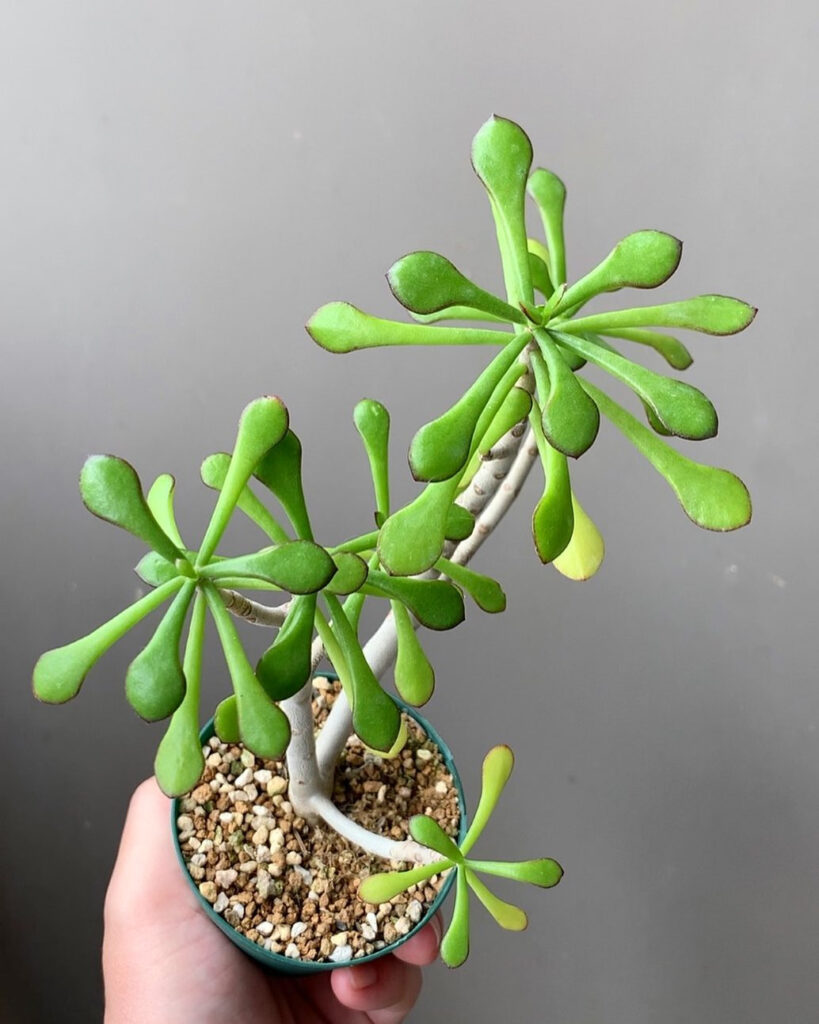
A shrubby succulent with thick, rounded green leaves and a bushy growth habit, perfect for adding structure to indoor collections.
Kalanchoe millotii
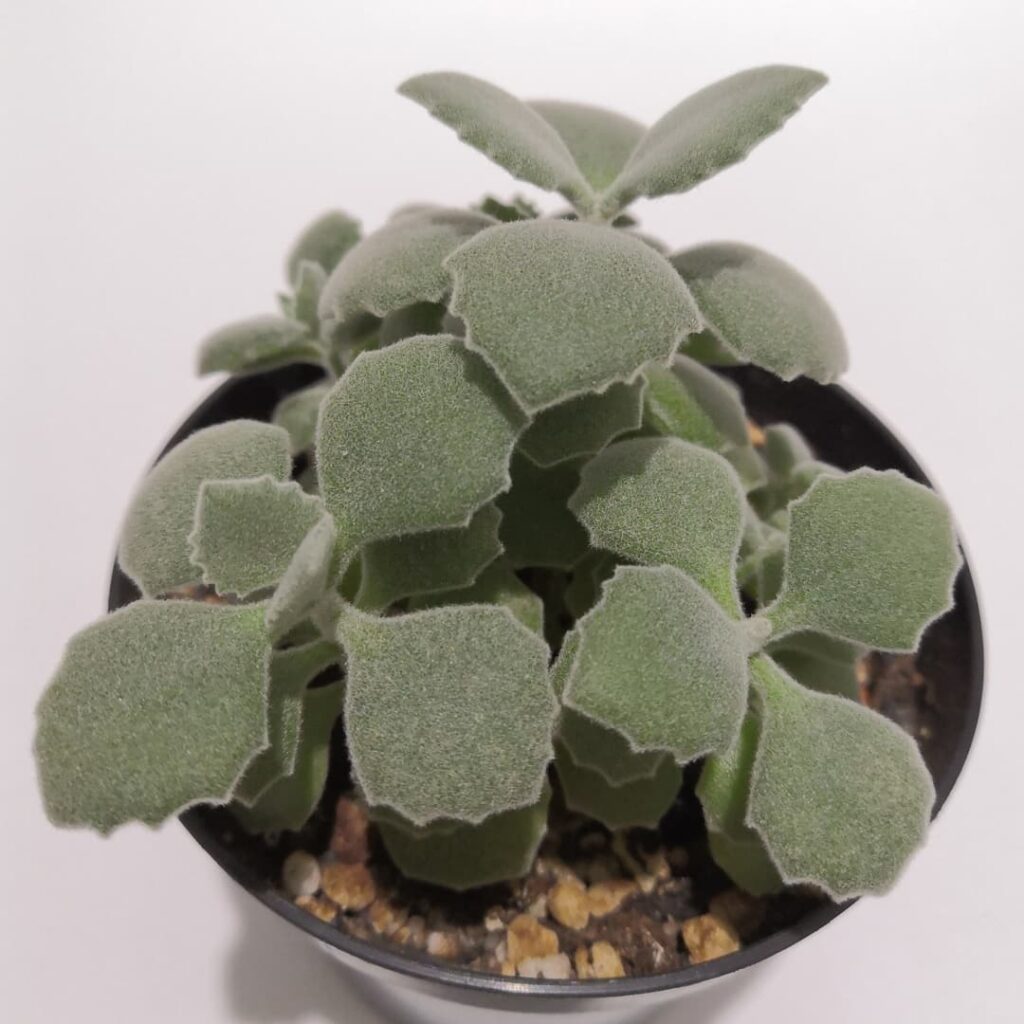
Features small, fuzzy, scalloped leaves with a soft gray-green hue, giving it a delicate and velvety appearance.
Kalanchoe nyikae
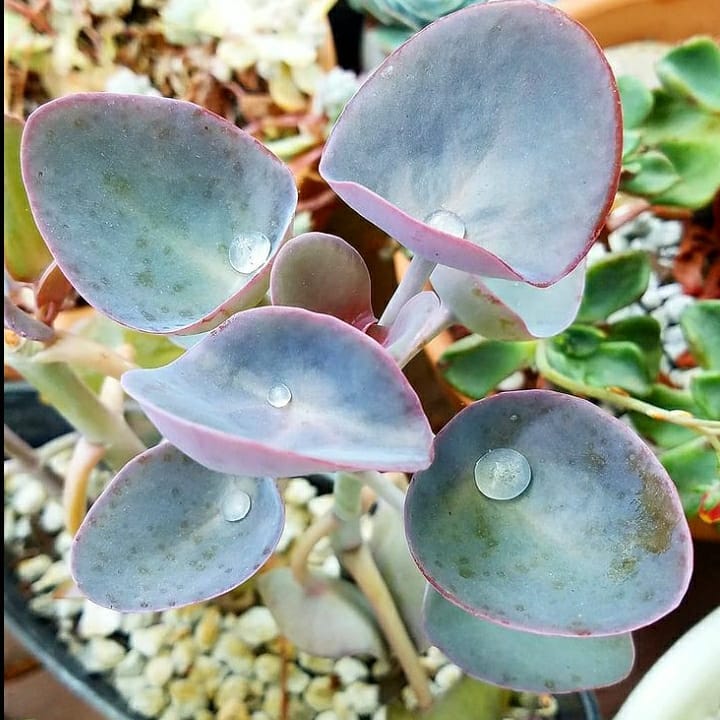
Kalanchoe nyikae is an upright-growing succulent native to the Kenya-Tanzania border region, thriving in seasonally dry tropical conditions. Its leaf color shifts depending on growth conditions, ranging from brownish-green to glaucous hues. At maturity, it produces pale orange flowers arranged in paniculate cymes, adding a delicate contrast to its foliage.
Kalanchoe synsepala
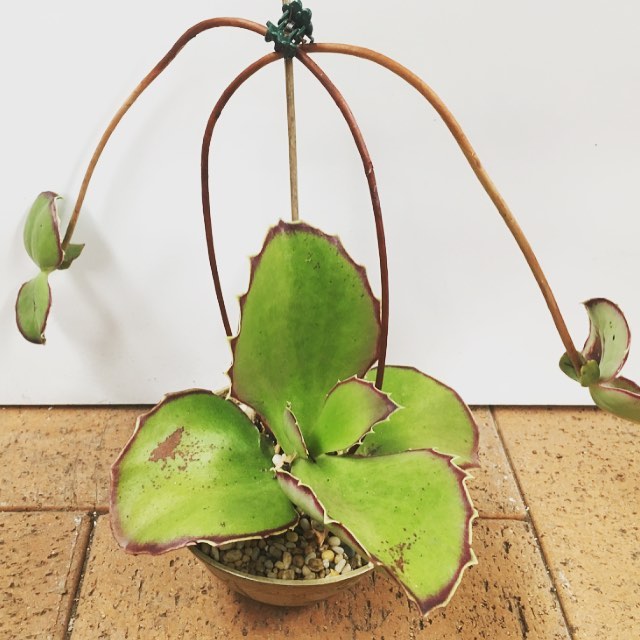
Kalanchoe synsepala, or “Walking Kalanchoe,” is a stoloniferous succulent with fleshy, gray-green leaves edged in pink-purple, producing baby plantlets at the ends of long stems that eventually take root. In mid-fall, it develops small, tubular flowers in pale pink to reddish hues, thriving in bright light and well-draining soil.
Kalanchoe longiflora
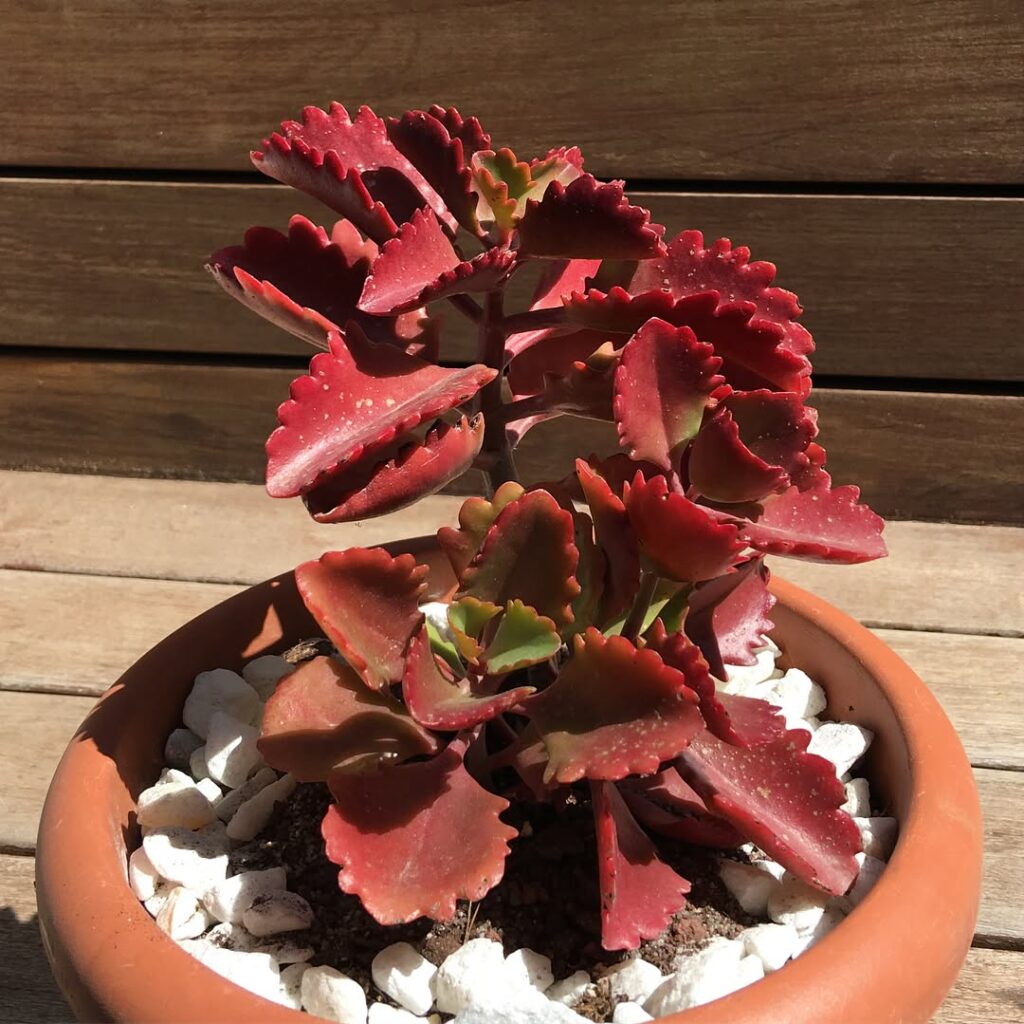
Kalanchoe longiflora, or “Tugela Cliff-Kalanchoe,” is a sparse succulent shrub with quadrangular, decumbent branches and bluish-green leaves that develop pink to reddish-brown edges. Native to South Africa, it produces clusters of yellow to orange flowers in fall and winter, thriving in rocky environments with bright light and well-draining soil.
Kalanchoe bracteata
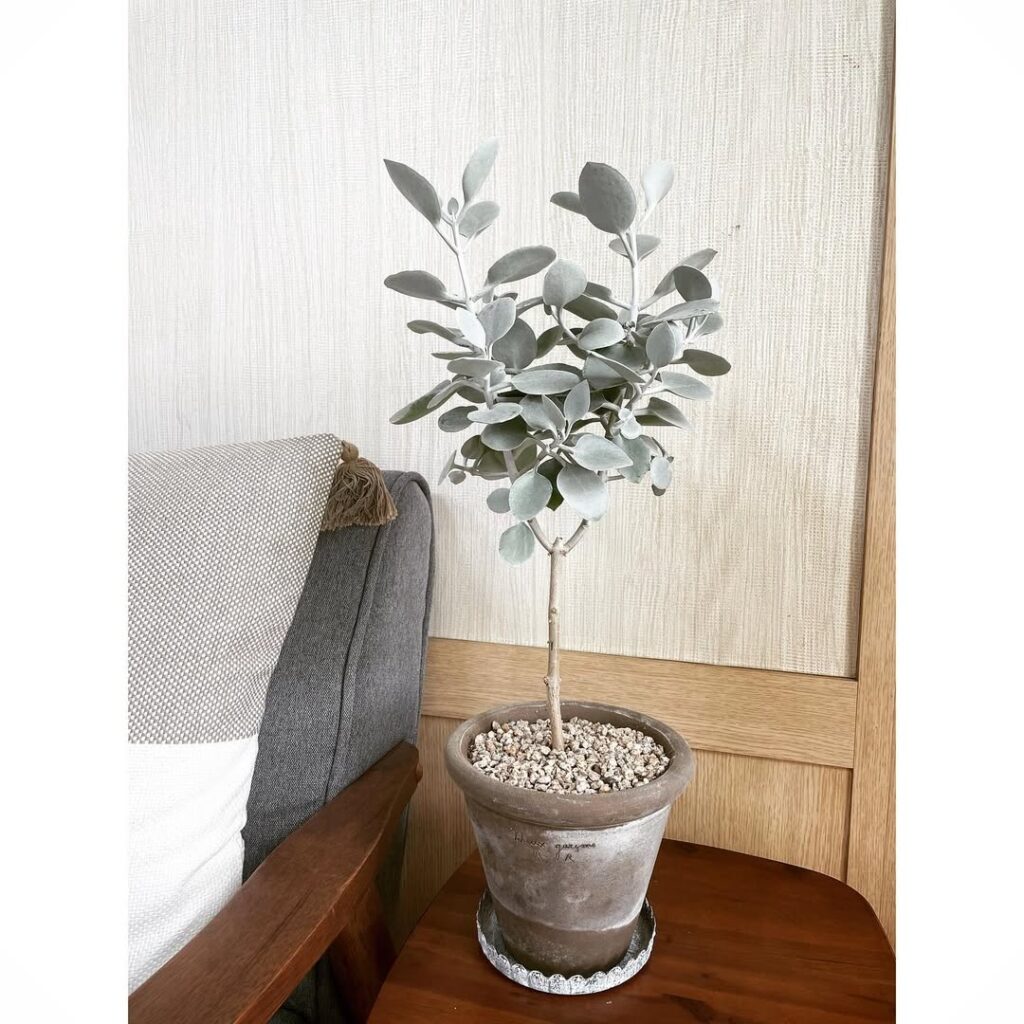
Kalanchoe bracteata, or “Silver Teaspoons,” is a shrubby succulent with silvery-green, spoon-shaped leaves covered in a waxy coating. Native to Madagascar, it produces clusters of vibrant reddish-orange flowers in spring and summer, thriving in bright light and well-draining soil.
Kalanchoe ceratophylla
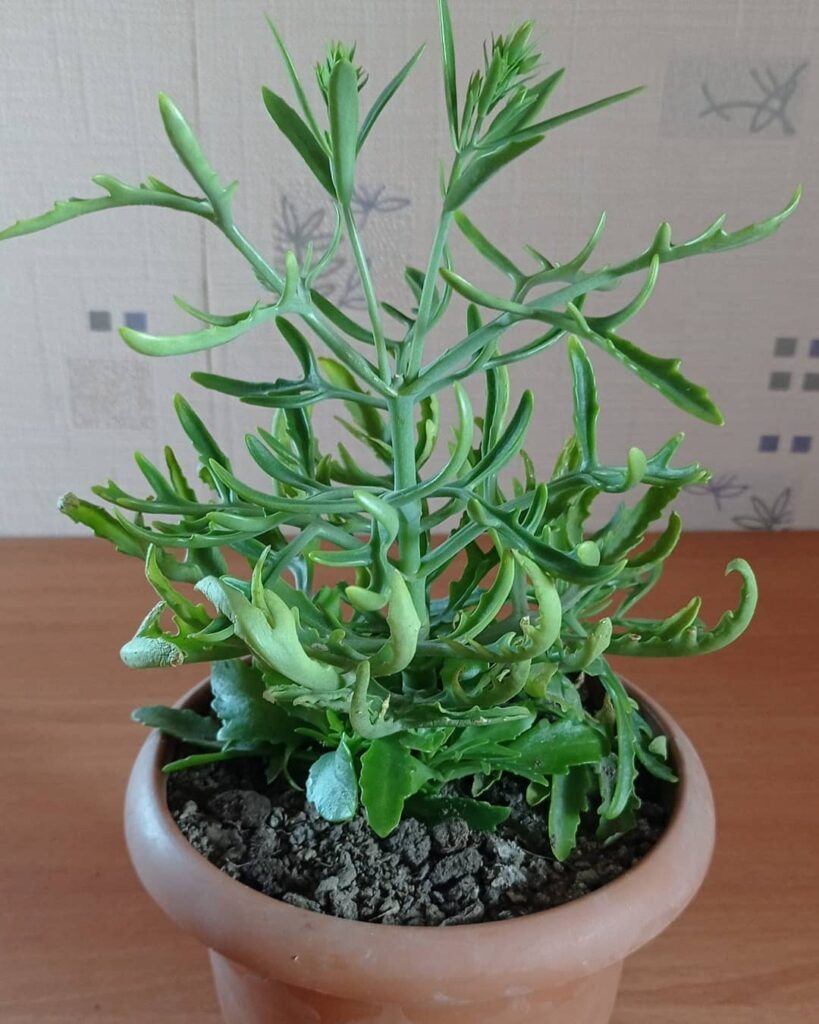
Kalanchoe ceratophylla is an evergreen, succulent shrub with deeply lobed, antler-like green leaves, often mistaken for Kalanchoe laciniata. Native to East Asia, it thrives in bright light and well-draining soil, occasionally producing small yellow-green flowers while being valued for its ornamental appeal.
Kalanchoe schizophylla
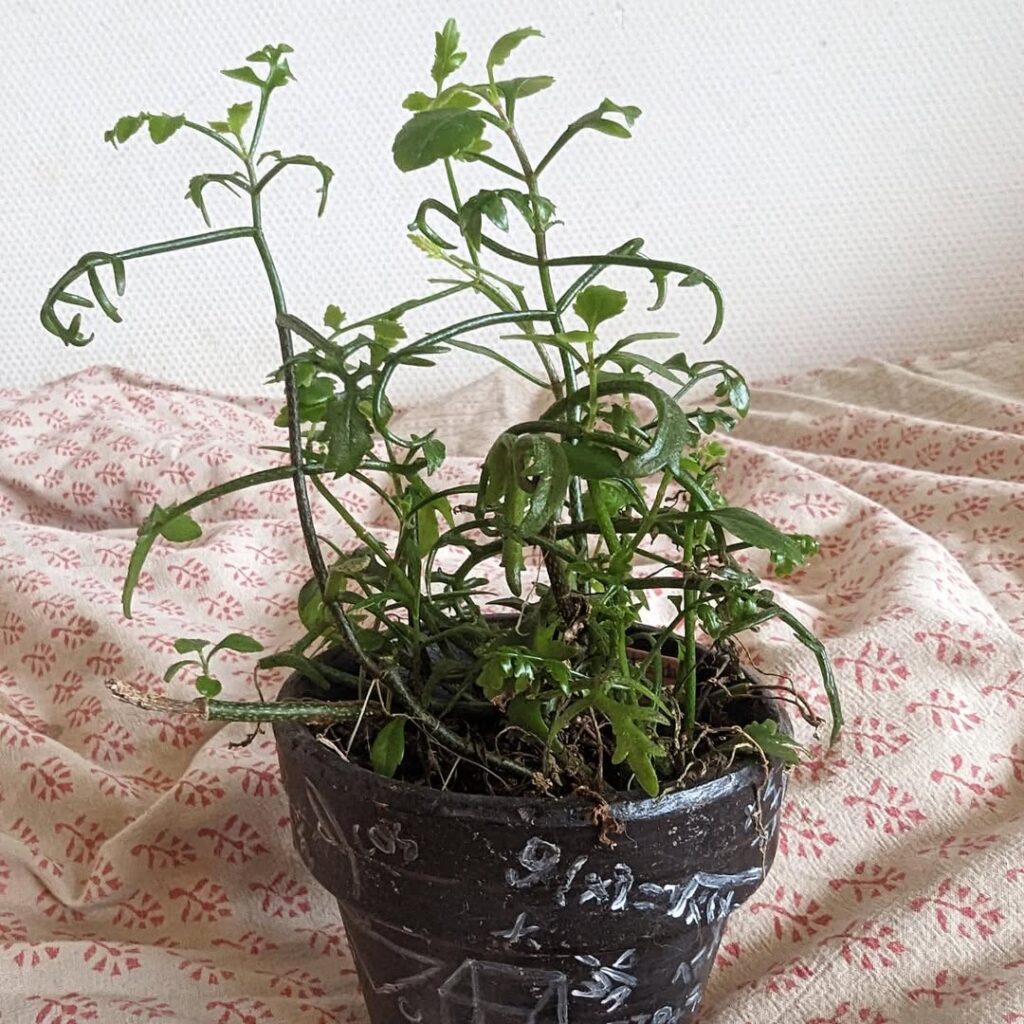
Displays deeply lobed, fern-like leaves with a striking green hue, making it a standout foliage variety with an intricate appearance.
Kalanchoe hildebrandtii
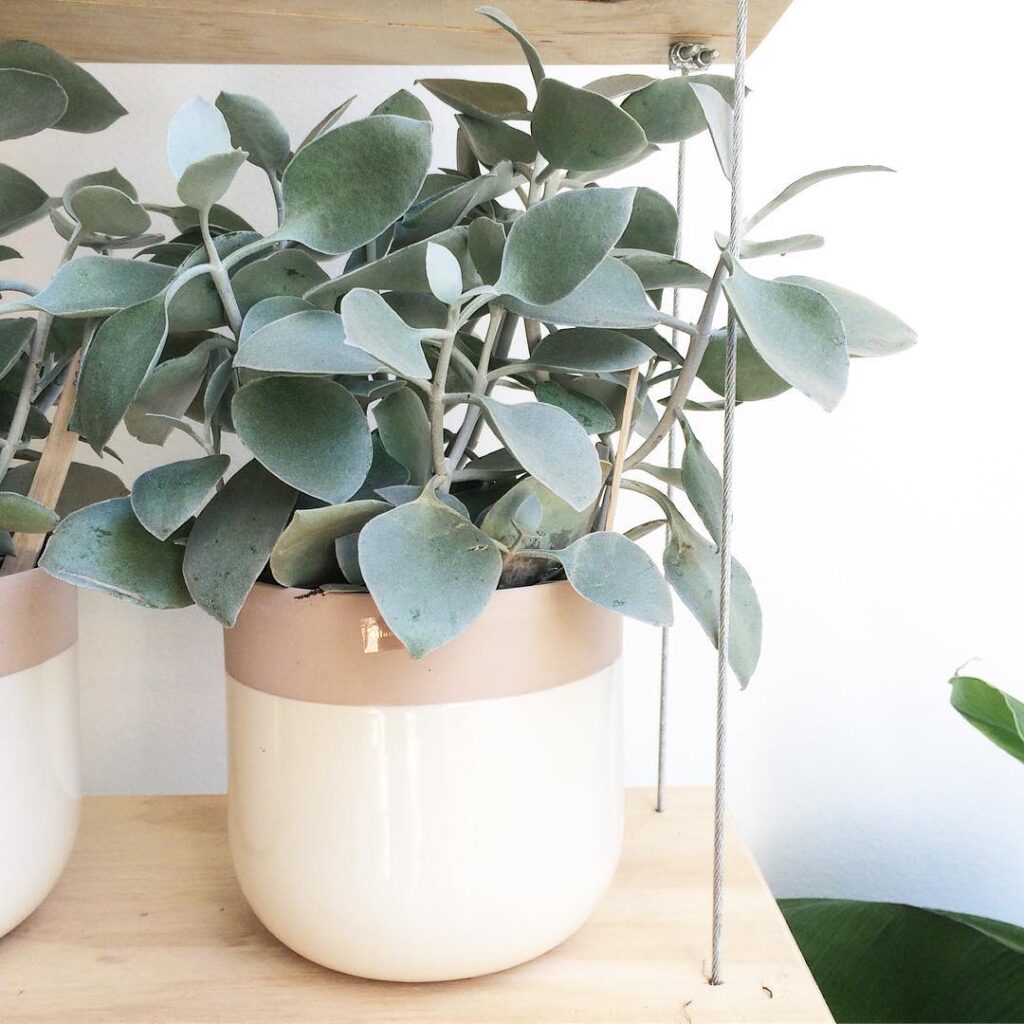
Kalanchoe hildebrandtii, or “Silver Teaspoons,” is a shrubby succulent with woody stems and silvery-green, spoon-shaped leaves covered in fine hairs. Native to Madagascar, it thrives in bright light and well-draining soil, producing small white to yellow-green flowers in summer.
Kalanchoe gastonis-bonnieri
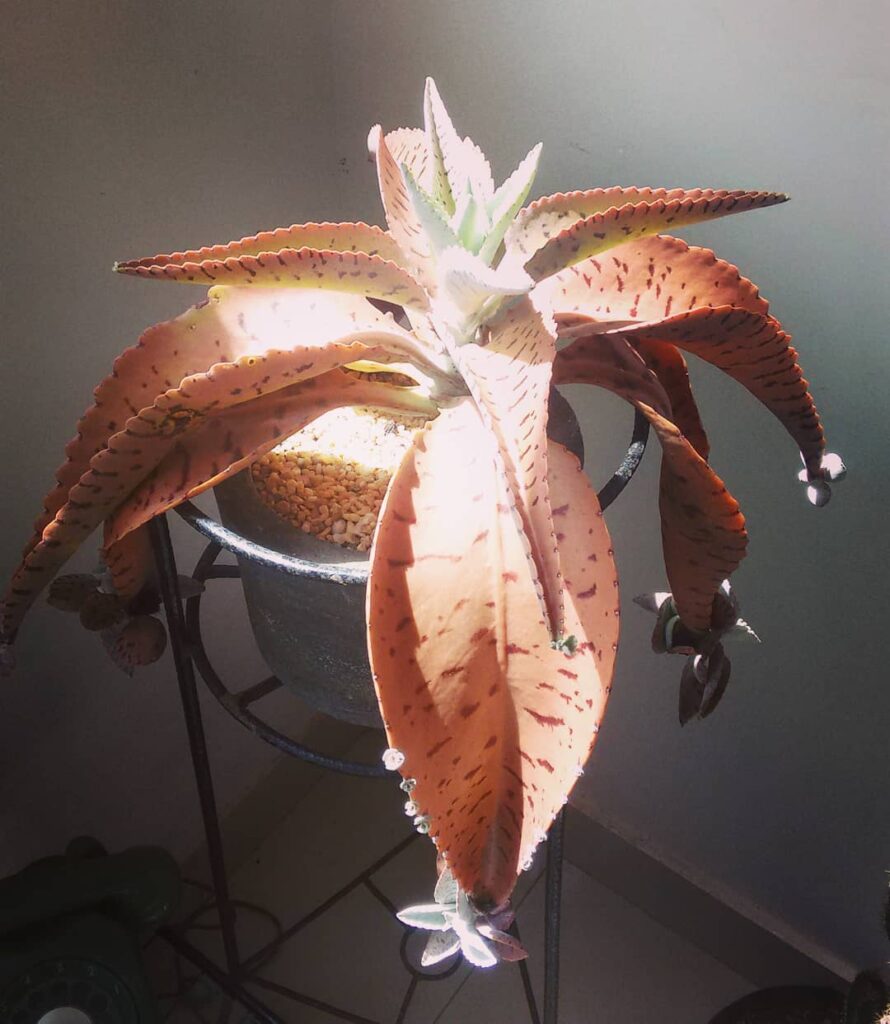
Kalanchoe gastonis-bonnieri, or “Donkey Ears,” is a fast-growing succulent with large, blotched leaves and tall flower stalks bearing yellow-green, tubular blooms with red or violet markings. Thriving in bright light and well-draining soil, it makes a bold statement in indoor and outdoor gardens.
Kalanchoe oricula
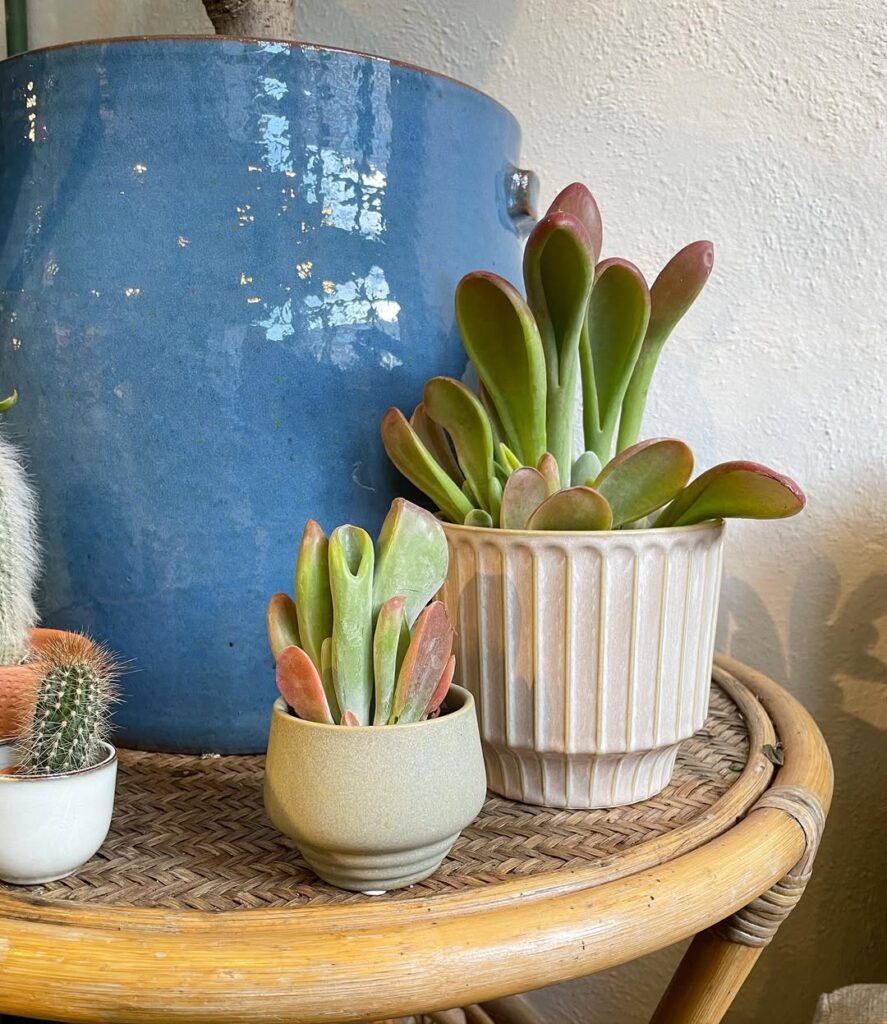
A mutant of Kalanchoe luciae, Oricula forms a rosette of gray-green leaves with curled red margins. In cool temperatures, the red hues become more vibrant.
Kalanchoe fedtschenkoi
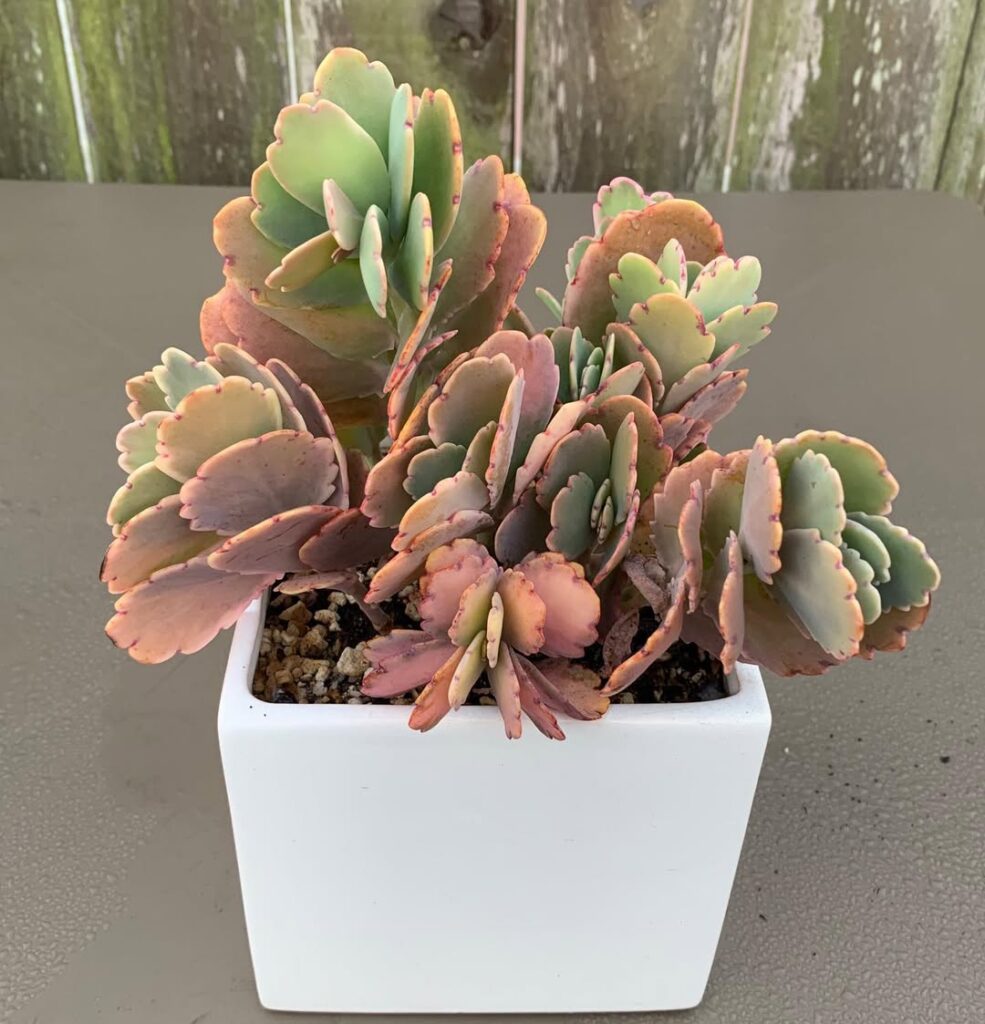
Also called Lavender Scallops, this variety has bluish-green leaves with scalloped edges. It produces small, bell-shaped pink flowers and thrives in bright, indirect light.
Kalanchoe eriophylla
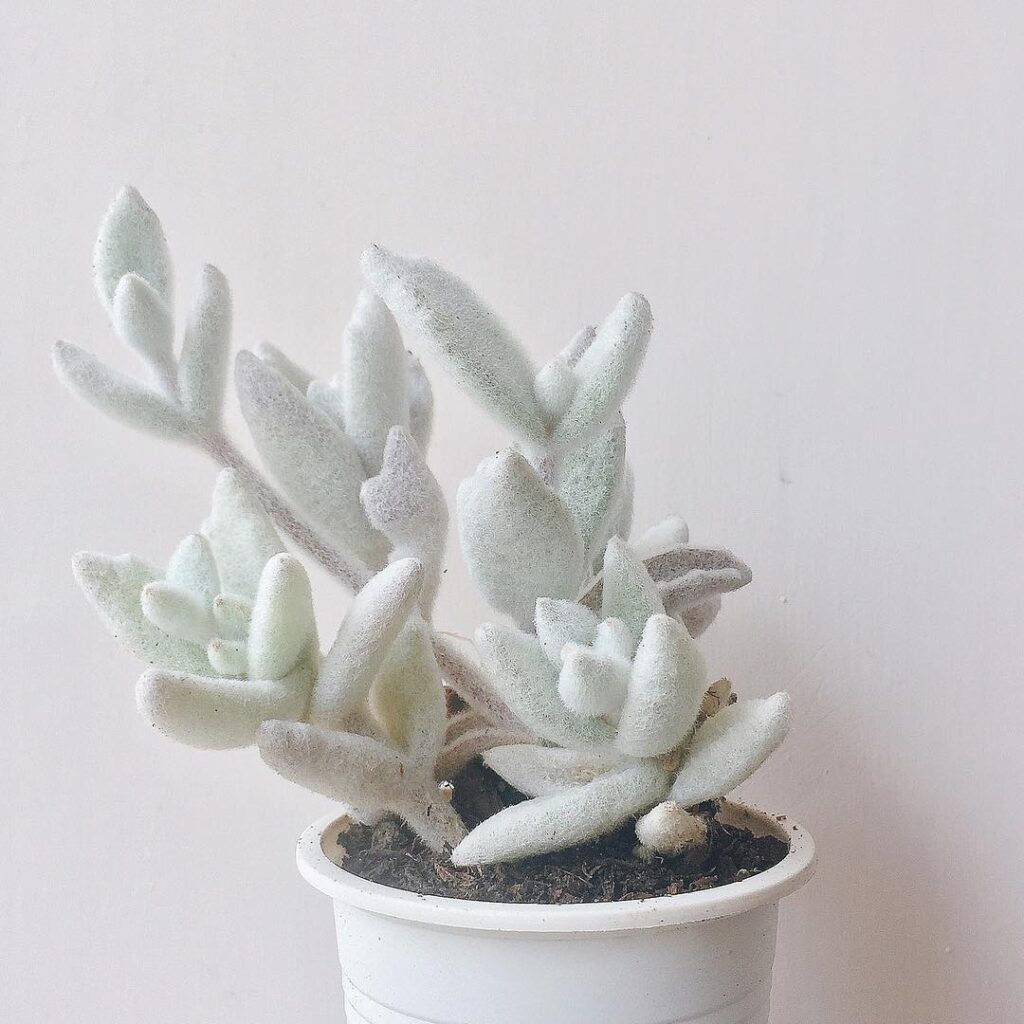
Kalanchoe eriophylla, or “Snow White Panda Plant,” is a compact succulent with fuzzy, white or pinkish-hued leaves. It forms a low-growing mat and produces delicate pink to violet flowers in early spring, thriving in bright light and well-draining soil.
Kalanchoe thyrsiflora
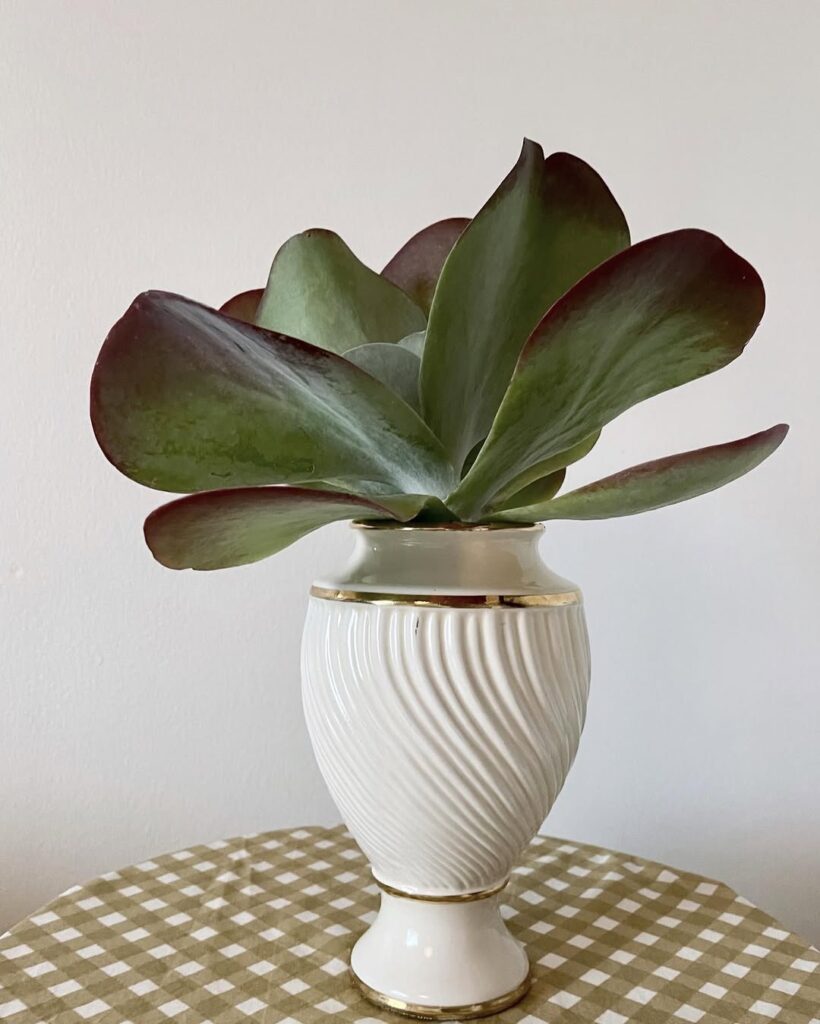
Often confused with Kalanchoe luciae, this variety has large, rounded leaves that turn deep red in bright light. It’s a dramatic succulent that adds bold color to indoor gardens.
Kalanchoe orgyalis
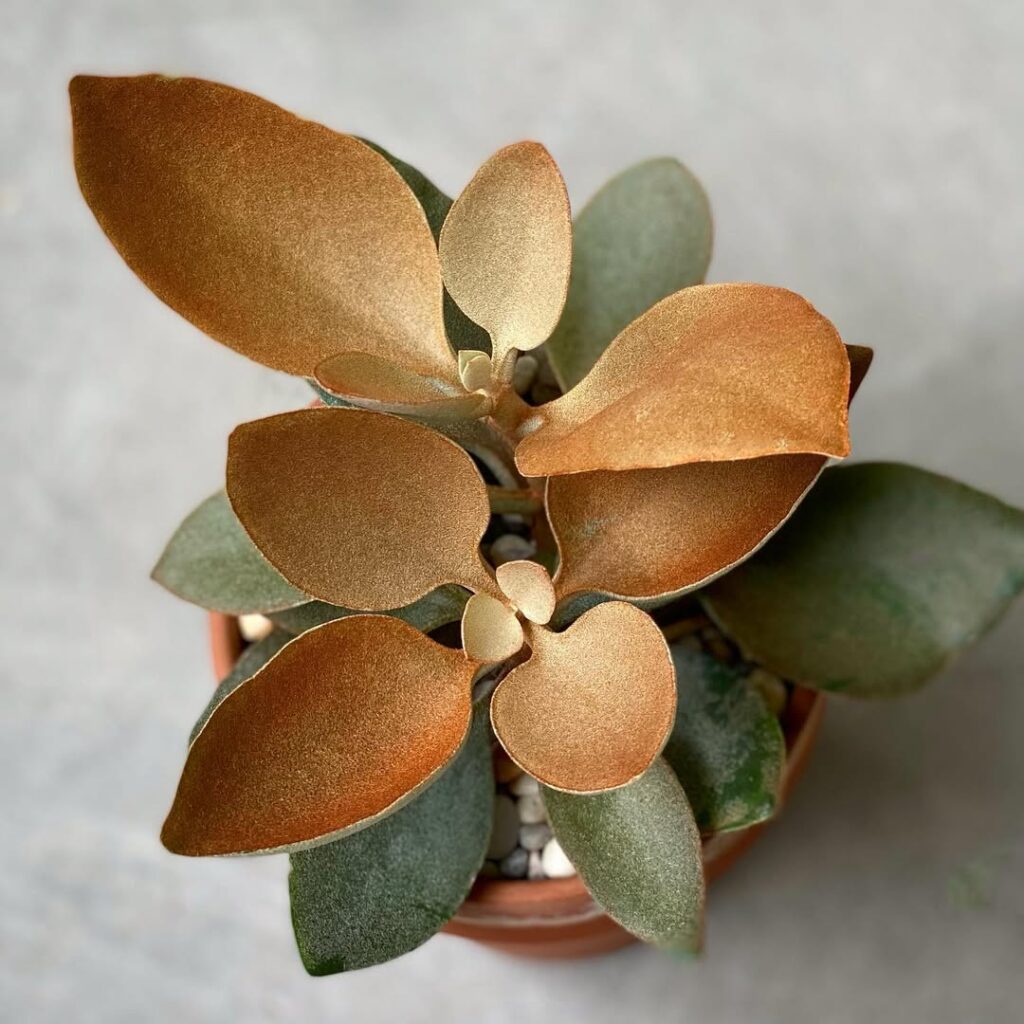
Kalanchoe orgyalis, or “Copper Spoons,” is a slow-growing succulent with velvety, spoon-shaped leaves that transition from coppery-brown to silvery-green as they mature. In late winter to early spring, it produces clusters of bright yellow flowers, thriving in well-draining soil and bright light.
Kalanchoe rhombopilosa
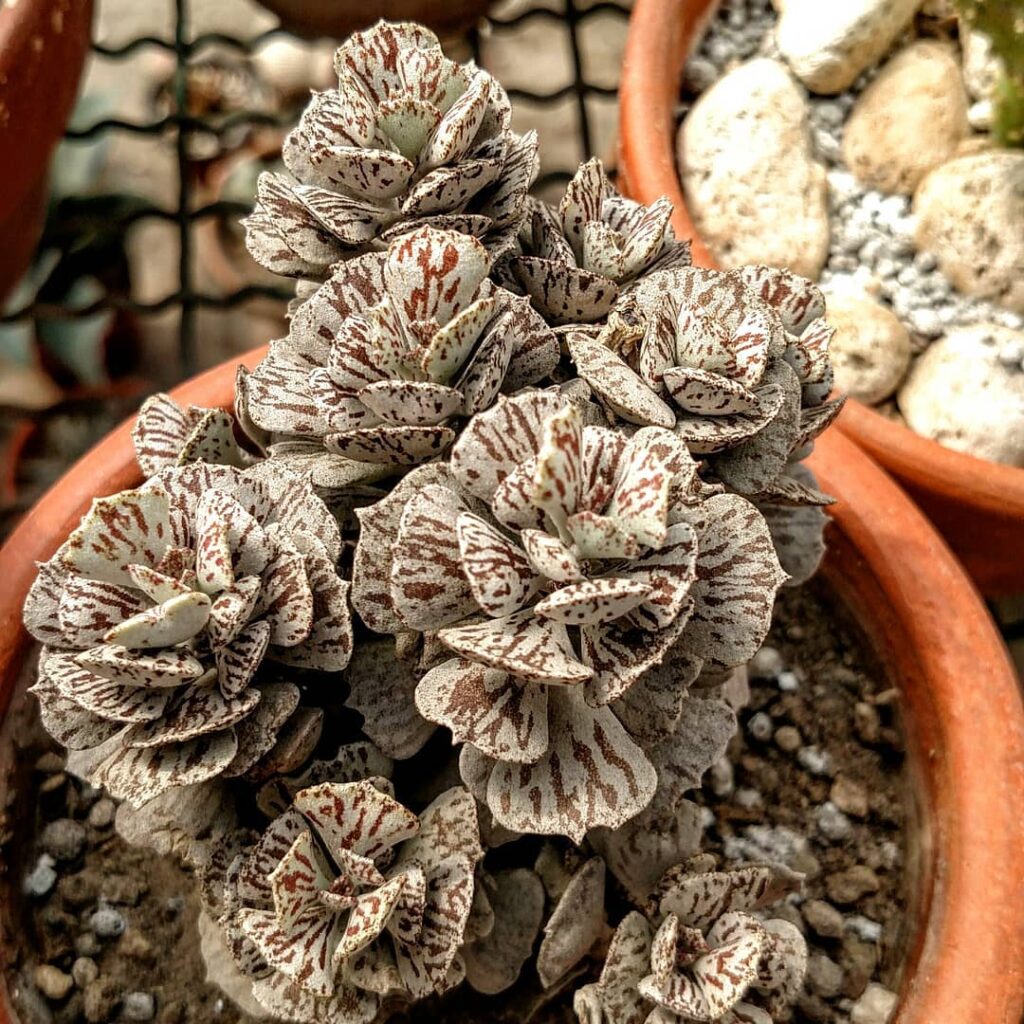
Kalanchoe rhombopilosa, or “Pies from Heaven,” is a rare succulent with small, rhomboid leaves marked by coppery-brown speckles. Native to Madagascar, it thrives in bright indirect light and well-draining soil, with its distinctive foliage changing hues based on light exposure.
Conclusion
Kalanchoe plants offer a stunning array of colors, textures, and growth habits, making them perfect for indoor gardening. Whether you’re drawn to vibrant, long-lasting blooms or uniquely patterned foliage, there’s a kalanchoe variety to suit every space and style. These hardy succulents thrive with minimal care, rewarding plant lovers with beauty and resilience. With so many options to choose from, which kalanchoe will you add to your collection?
